Game and narrative design, and more.
I’ve recently redone my portfolio to something a little more bite-sized! (Though, you’re welcome to browse the old experience below.)
Click into the box to start. Use the arrow keys to move the guy around and enter/return/tap to speed up dialogue. If on mobile, drag to move.
Gallery
Click on a card to learn more, or select the dropdown to filter by project type.
Contents
This is essentially the same as the gallery above, but just a text list of links.
I love using technology in interesting ways, especially if it helps me build an adventure for other people to enjoy. Some of the below examples I made for work, and some were just a result of my constant need to create things.
★ Creating location-based adventures with Traipse.
★ NarraScope presentation about developing and writing for location-based gaming.
★ The Gray Matter Sodality, a puzzle subscription by mail about the theft of Einstein’s brain.
★ Annual treasure hunt with real treasure.
★ Building quests for large festivals, and my Rings of Power.
★ Secrets in my Little Free Library.
★ I made a mega-game for my child’s birthday party.
★ Turning Metro’s logo into poop with augmented reality.
★ A geocaching Twitter bot.
★ Locative Storytelling using Twine.
The below projects were from my days as a marketing director at the Shakespeare Theatre Company in Washington, D.C. (STC) where I used the art on stage to try out some different ideas.
★ League of Resident Theatres presentation.
★ Augmented reality and The School for Lies.
★ Undo Othello.
★ Juliet_Bot, a Facebook Messenger bot.
★ Redactor, a text adventure for 1984.
★ Wedding invitation to The Taming of the Shrew.
★ Set the events of Macbeth into motion.
★ Secret Seeds.
★ A puzzle game for A Funny Thing Happened on the Way to the Forum.
★ Send a snarky valentine for The Importance of Being Earnest.
★ As You Like It road trip kit.
★ Send a message in a bottle for The Tempest.
★ Creating location-based adventures with Traipse
At Traipse I’ve created dozens and dozens of scavenger hunt walking tours to be played in our location-based gaming app. The tours range anywhere from tours of local history, pub crawls, Main Street shopping experiences, and sometimes (my favorite) weirder fare. The way the app works is that a player arrives at a location, the app delivers interpretive content, and then poses a question that can only be solved by finding something at that location.

I pride myself on being able to spot things in an area that most people miss, and it’s invaluable for a job where I can turn those oddities into puzzles to solve. It causes players to slow down, and since these scavenger hunt walking tours have no reward for being completed quickly, it has meant that players engage with each place in a meaningful way.
Towns that have a lot of physical historical plaques I can build puzzles from are my heaven, but every once in a while I would encounter an absolute gem. For instance, we were hired to create a tour of the Suffolk Virginia Railroad Museum and I found a telegraph machine you were allowed to touch in the attic of the building’s lookout tower. Sitting on the table was an explanation of Morse Code, and instantly my puzzle was made.
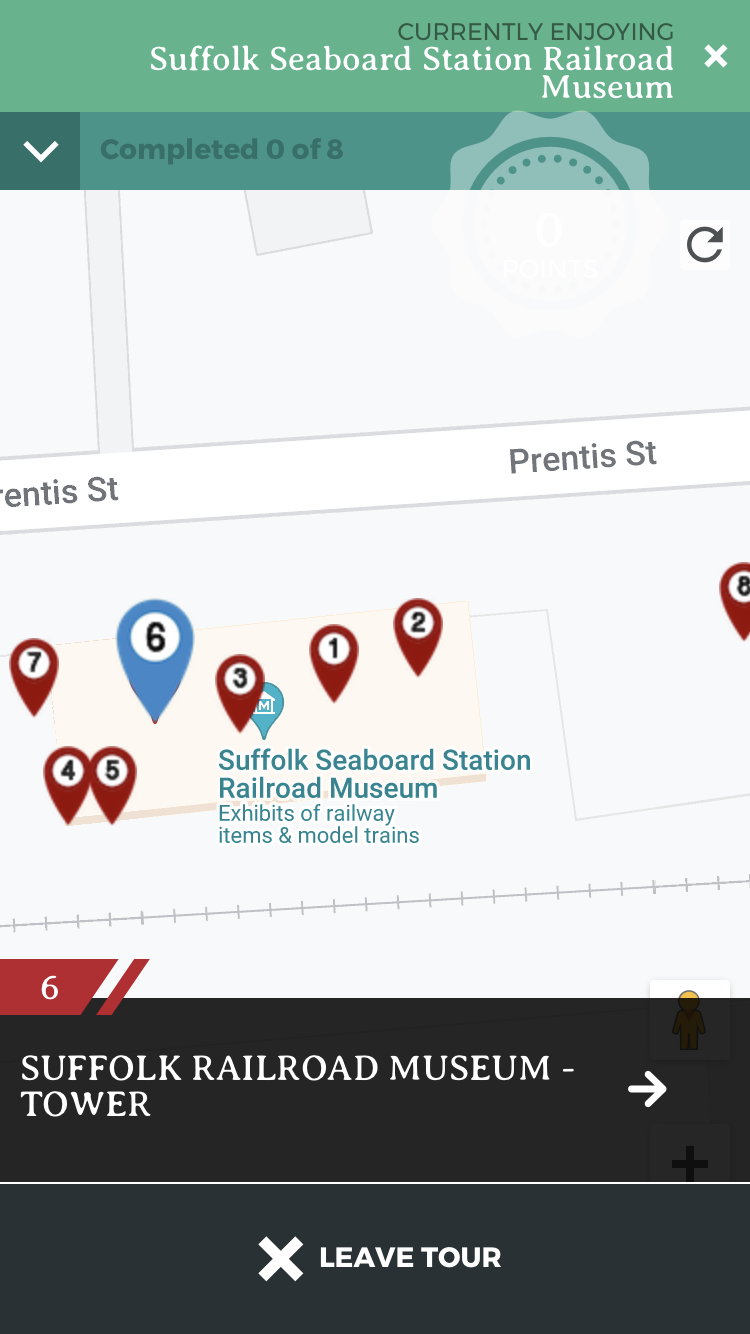
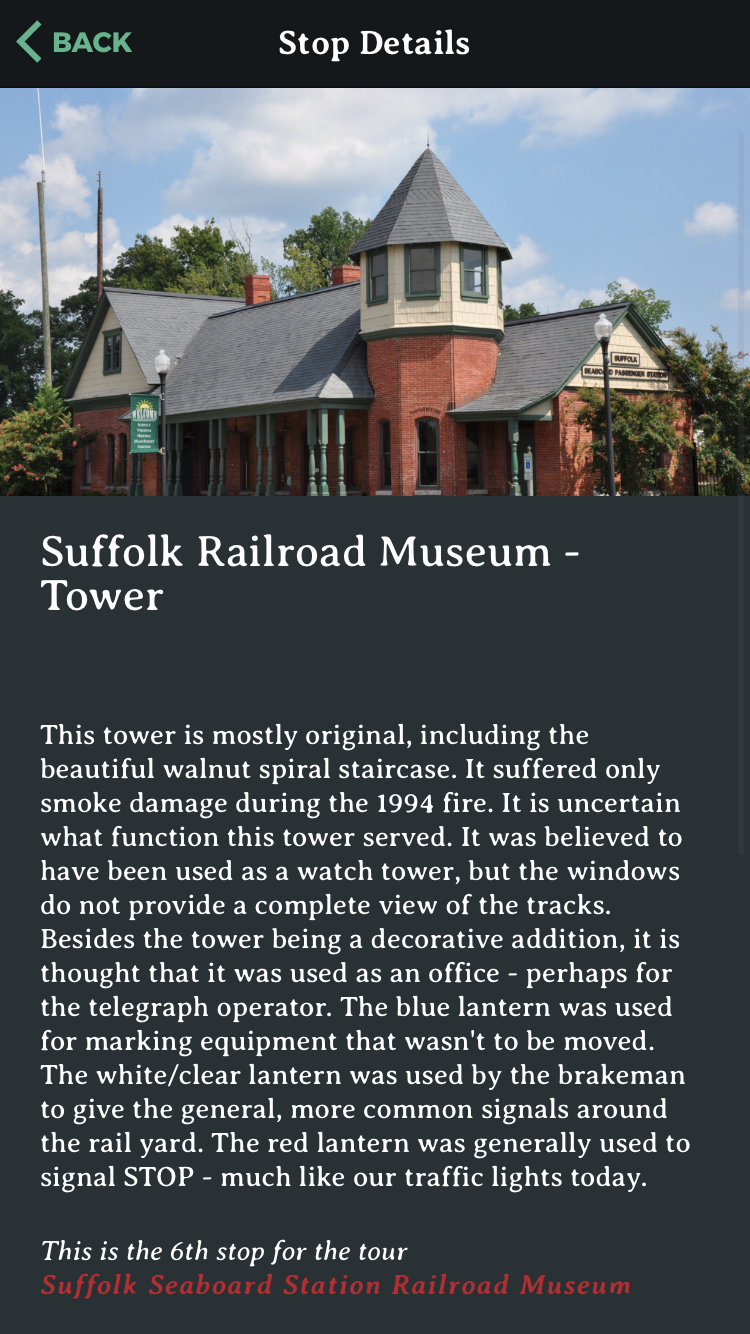

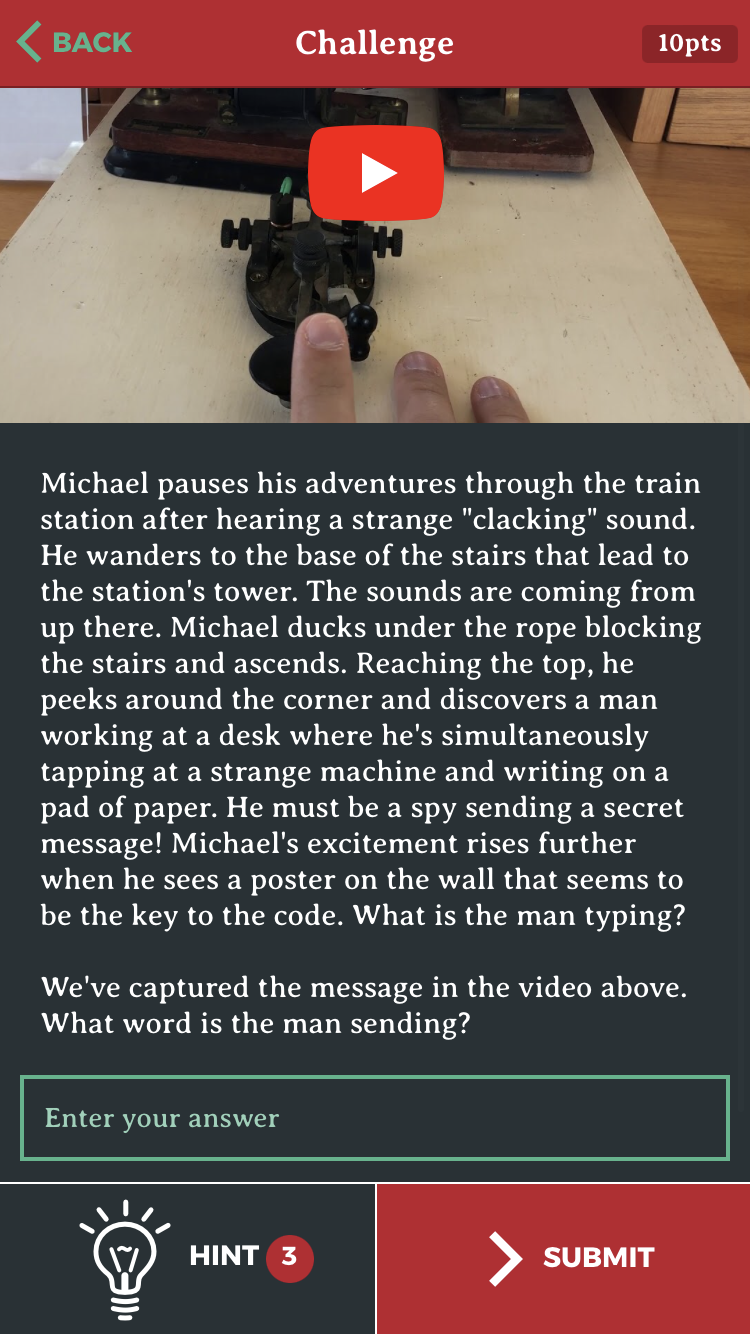

On more than one occasion I created fictional stories to accompany a tour, unlocking pieces of the narrative as the player completed stops along the tour. It was a useful way to tie together locations that weren’t always very well connected otherwise. Abingdon, Virginia, for instance, was a place founded mainly as a crossroads for European settlers heading westward. Its big claim to fame is that frontiersman Daniel Boone once stayed the night there and some wolves came out of a nearby cave and attacked his dogs. That’s… kinda it. To Abingdon’s credit, they’ve now taken that wolf iconography and made it the symbol of their town. I created a walking tour of places where you could find interesting examples of that iconography, and used a story to tie the journey together. That tour quickly became one of our most popular adventures.
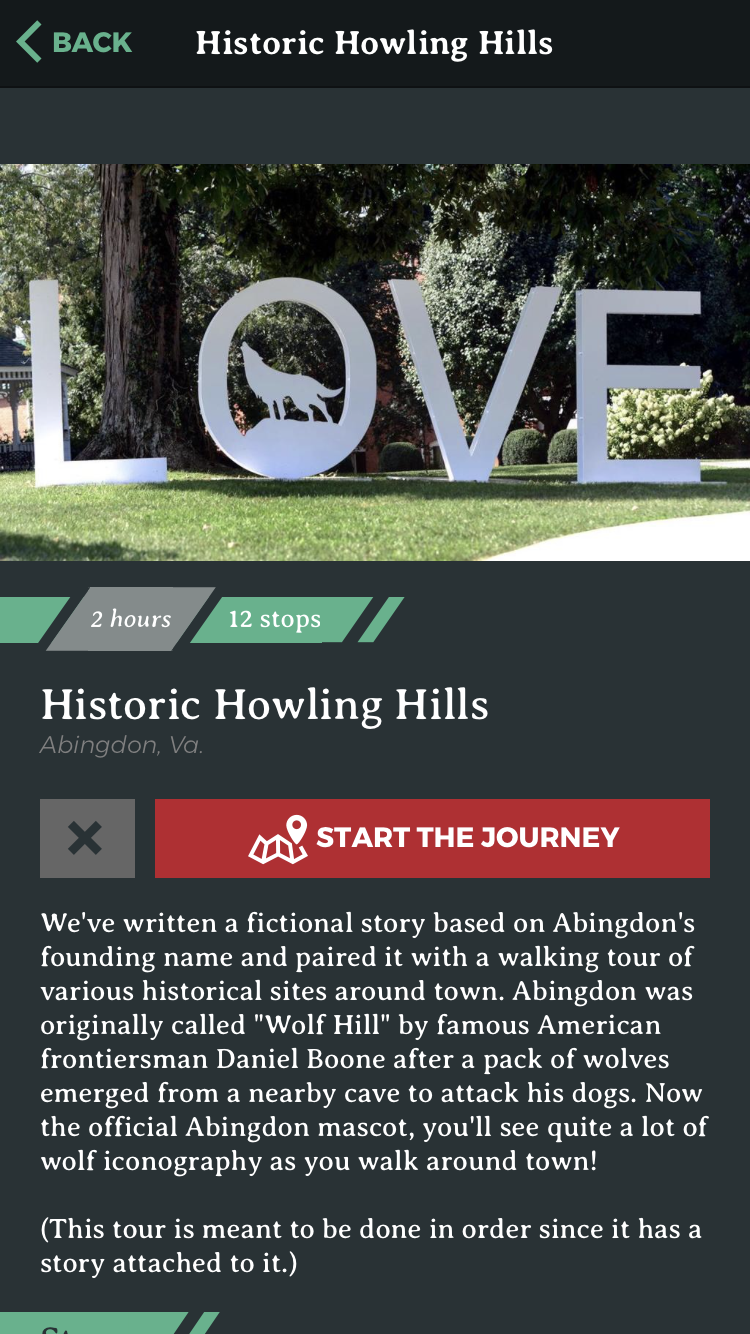
Often Traipse clients hired me to create specific tours to promote some tourism initiative, but my most favorite projects were the folks who didn’t know what they wanted. I absolutely loved coming to a new place and discovering what was interesting about it, and then helping locals who lived there all their lives realize it.
★ NarraScope presentation about developing and writing for location-based gaming
My presentation at the 2019 NarraScope conference held at MIT about narrative design in gaming and entertainment was one of the few presentations selected for filming. Watch it.
★ The Gray Matter Sodality, a puzzle subscription by mail
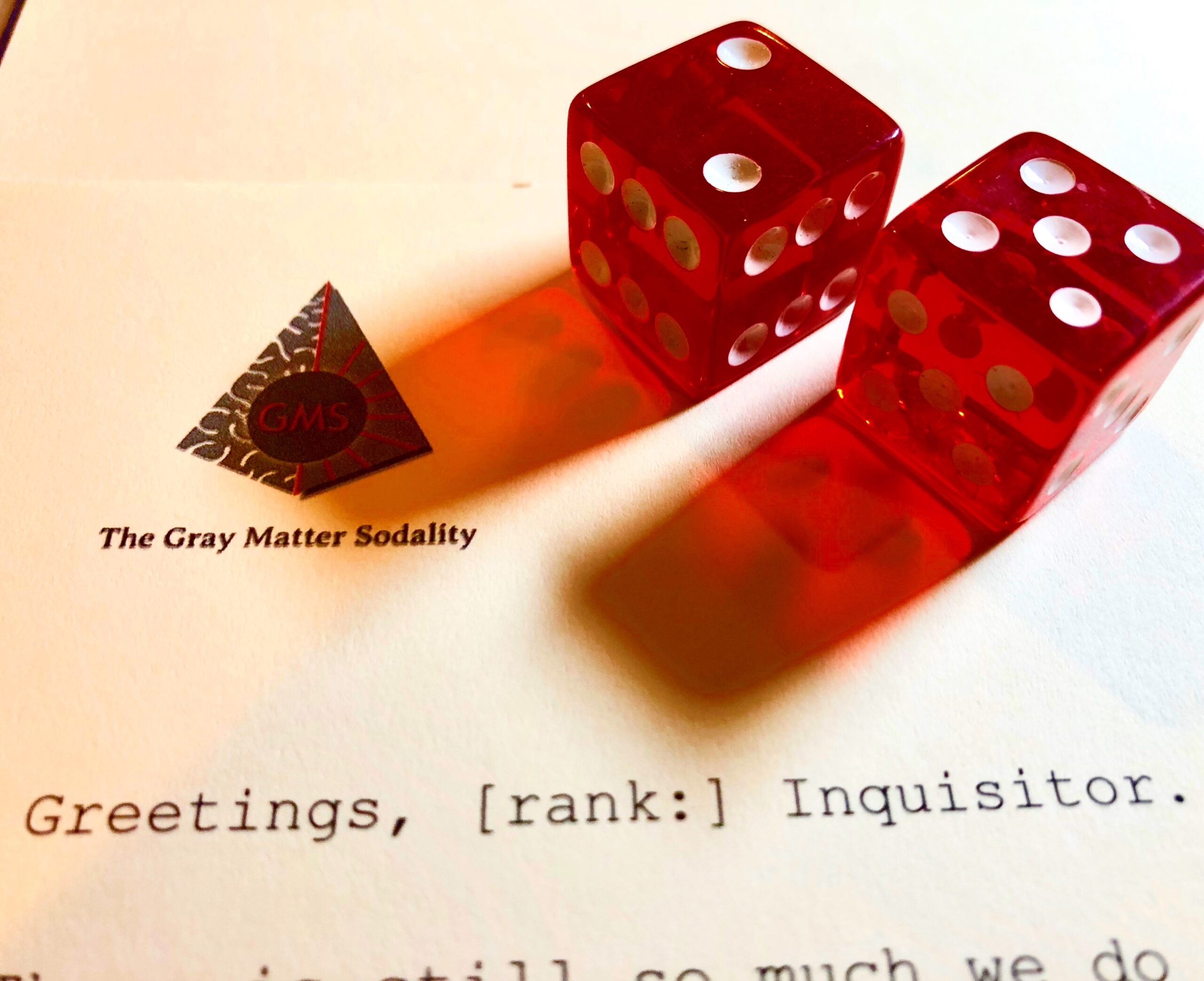
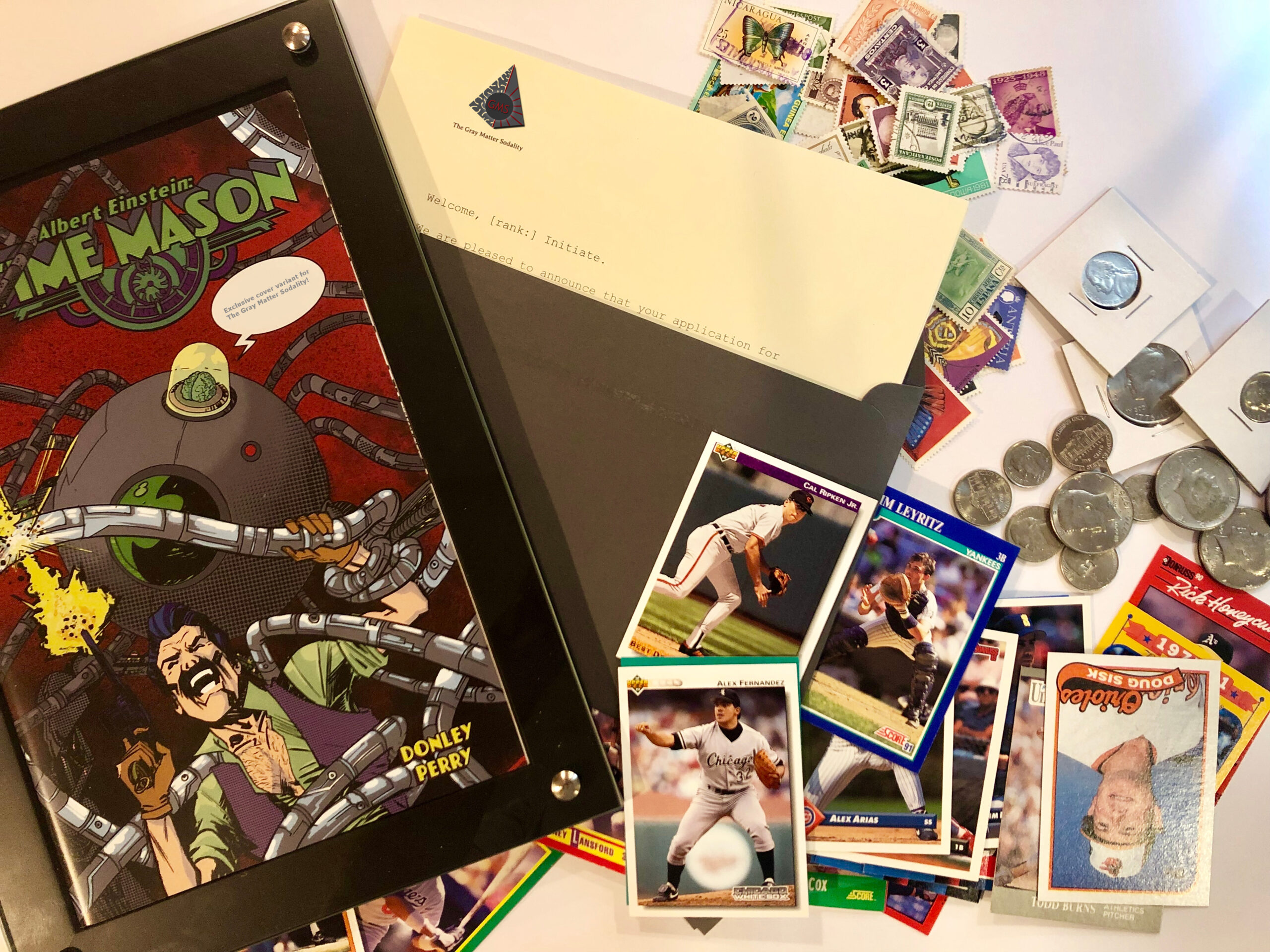
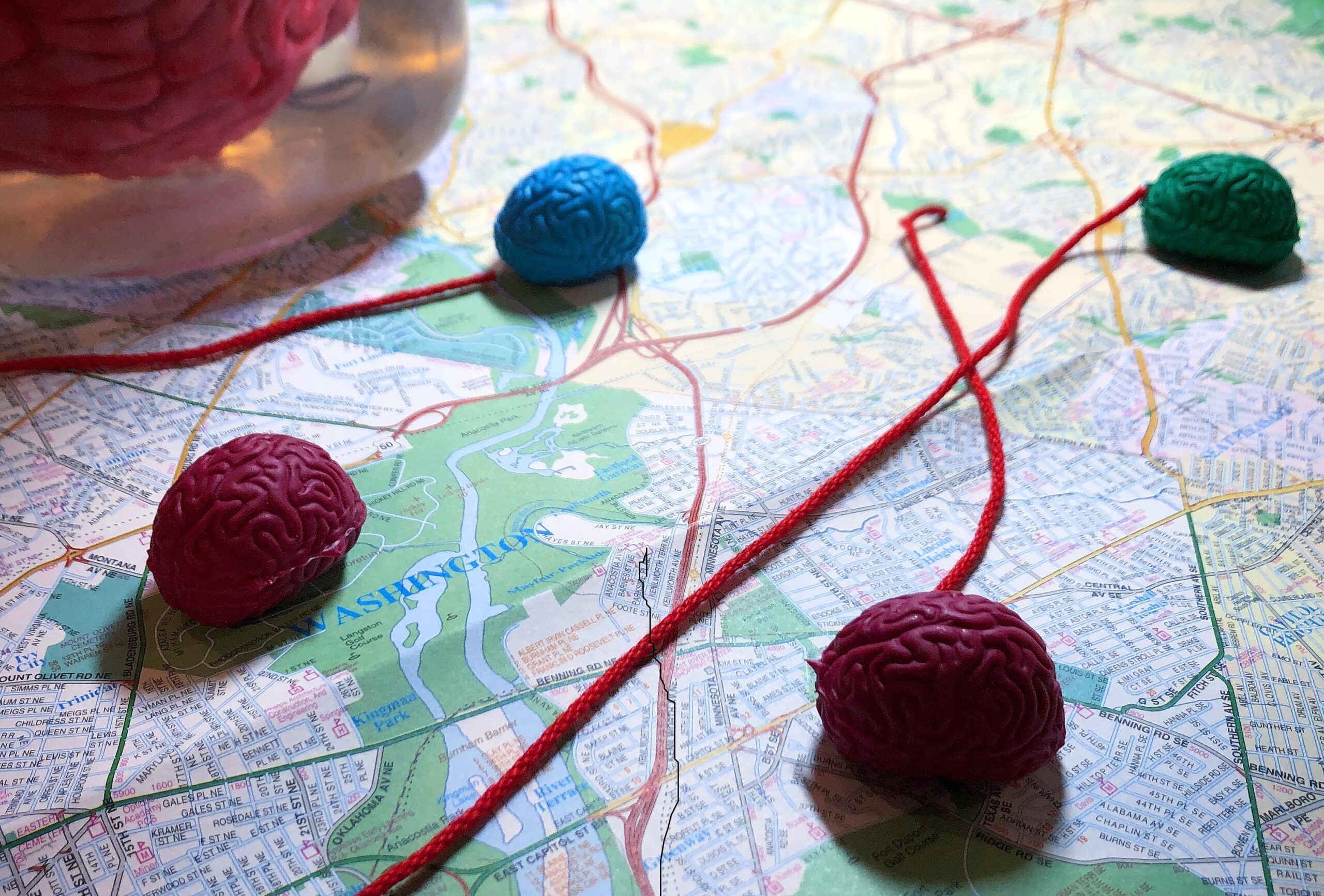
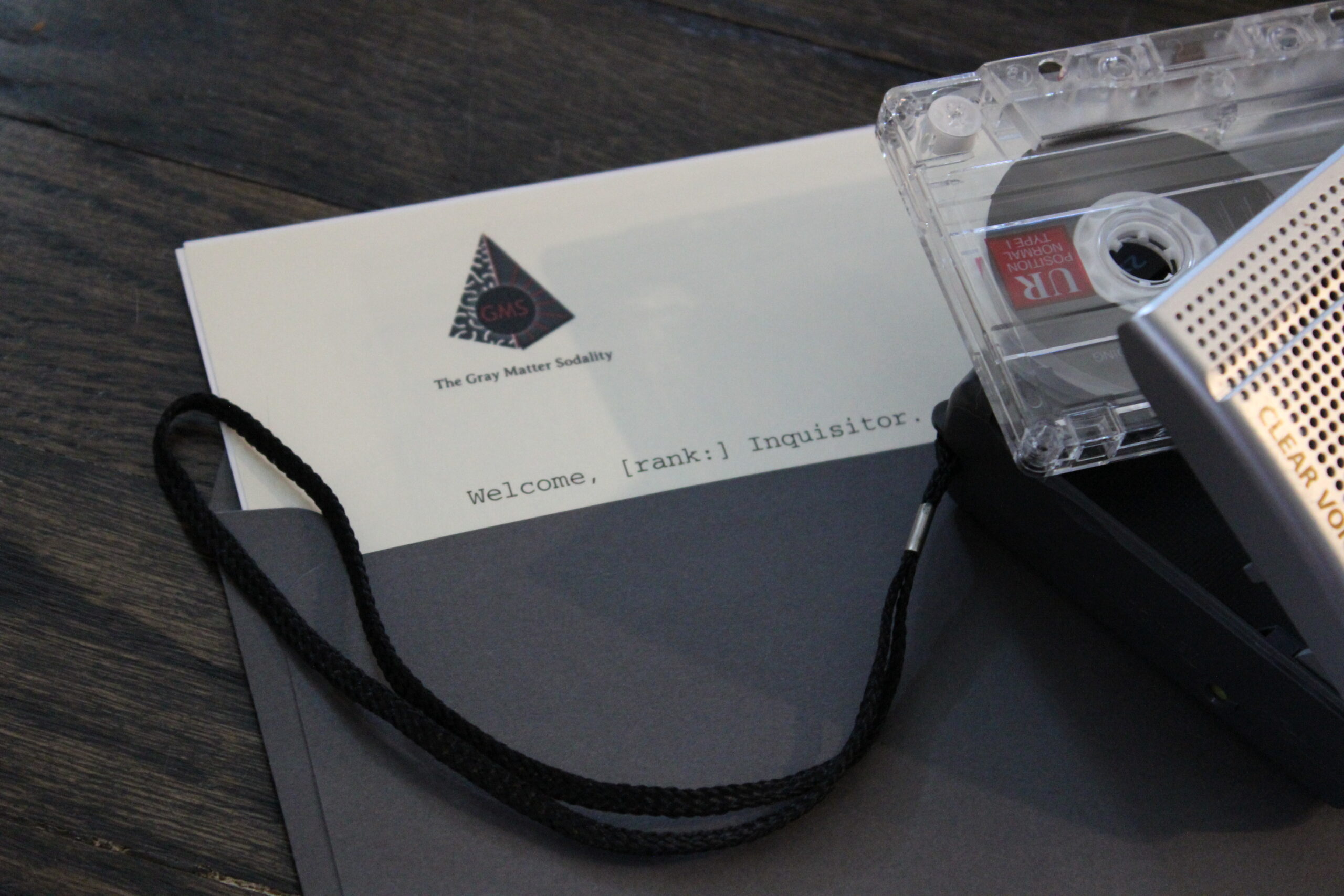
“ELEGANT challenges…BEAUTIFULLY designed.” –ARGNet
“REFRESHING… &%^*ing INSPIRED… as humorous as it was clever.” —Room Escape Artist
“MIND-BOGGLING… EXTRAORDINARY… a good mental exercise, and it’s a fantastic bonding activity too.” —Hello Subscription
I created a subscription where every month I mailed you physical puzzles that I made from ordinary objects. (Imagine a mini-escape room coming to your door each month.) These puzzles contribute to the story of a fictional organization called The Gray Matter Sodality (GMS) who are dedicated to reclaiming the stolen pieces of Albert Einstein’s brain (his brain was really stolen). There was an ongoing story—very much like an episodic TV show—tied into each month’s mailing where you were an employee of that organization tasked with finding those stolen pieces.
GMS launched in the summer of 2018 and floundered for a while. I learned some valuable lessons along the way about marketing such a product. Then, the holiday season came and my hard work finally paid off. I was flooded with new orders and my poor basement became very crowded with supplies and puzzle-making materials. Soon, I was managing hundreds of orders, (500 subscribers at its height), had to hire a couple part-time staff, and was spending ages managing staff, marketing, customer needs, and materials sourcing and assembly. What more, the whole thing was profitable. Imagine that. One particularly busy day months later, however, I looked around and realized that GMS was no longer the fun side project that it once been. I was no longer getting to actually design new puzzles because I was so busy with the business of it.
Then the pandemic came, and frankly, it gave me a way to wind down the project without feeling too guilty about it. As the global supply chain melted down it became very hard and very expensive to find the materials I needed for all the different mailings we were assembling. So, it was then that I decided to retire GMS, fulfilling all existing orders, but not taking any new orders. It was such a cool and wonderful experience. One day I hope to write up a full postmortem about the project.
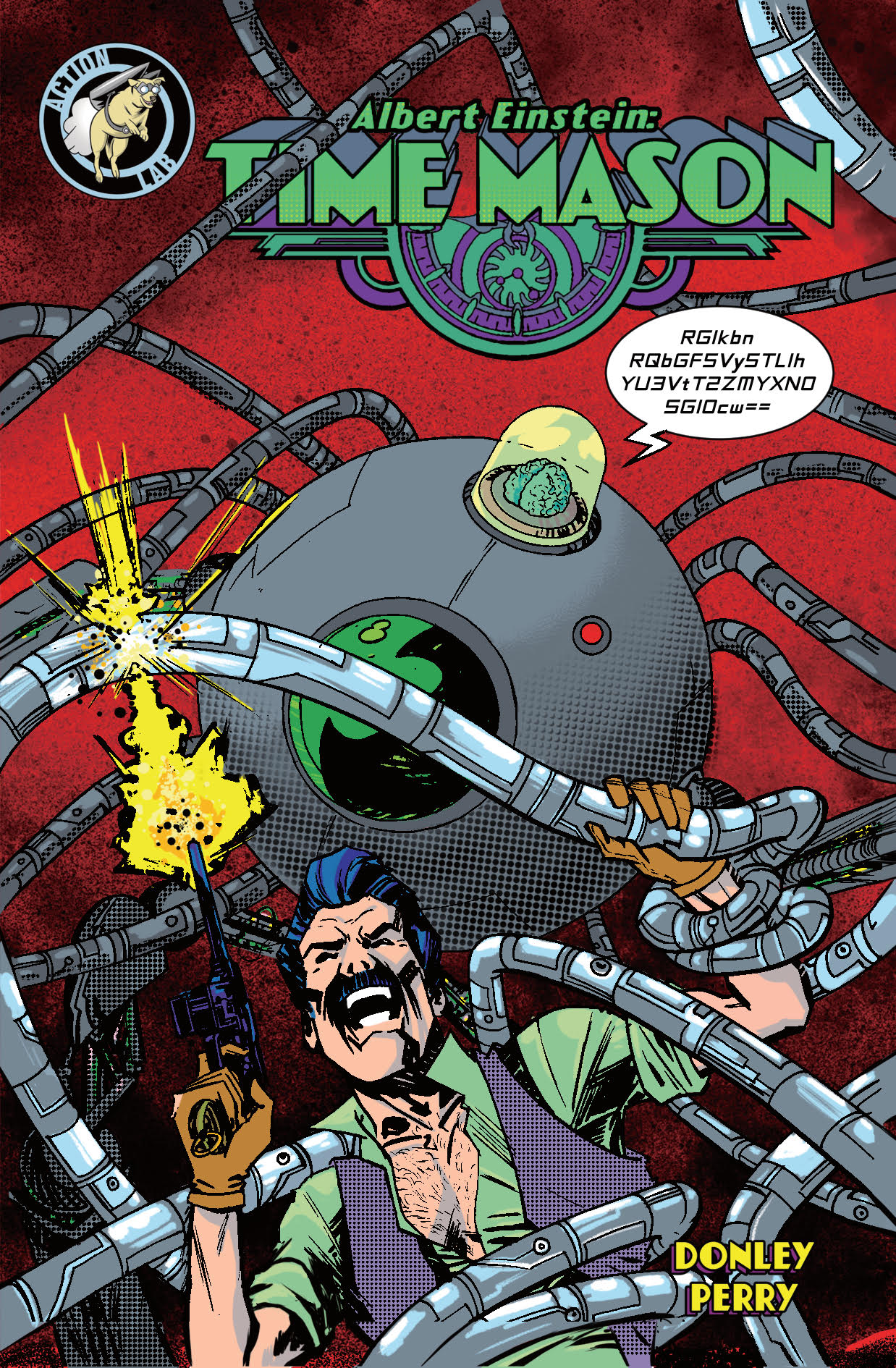
★ Annual Treasure Hunt with real treasure
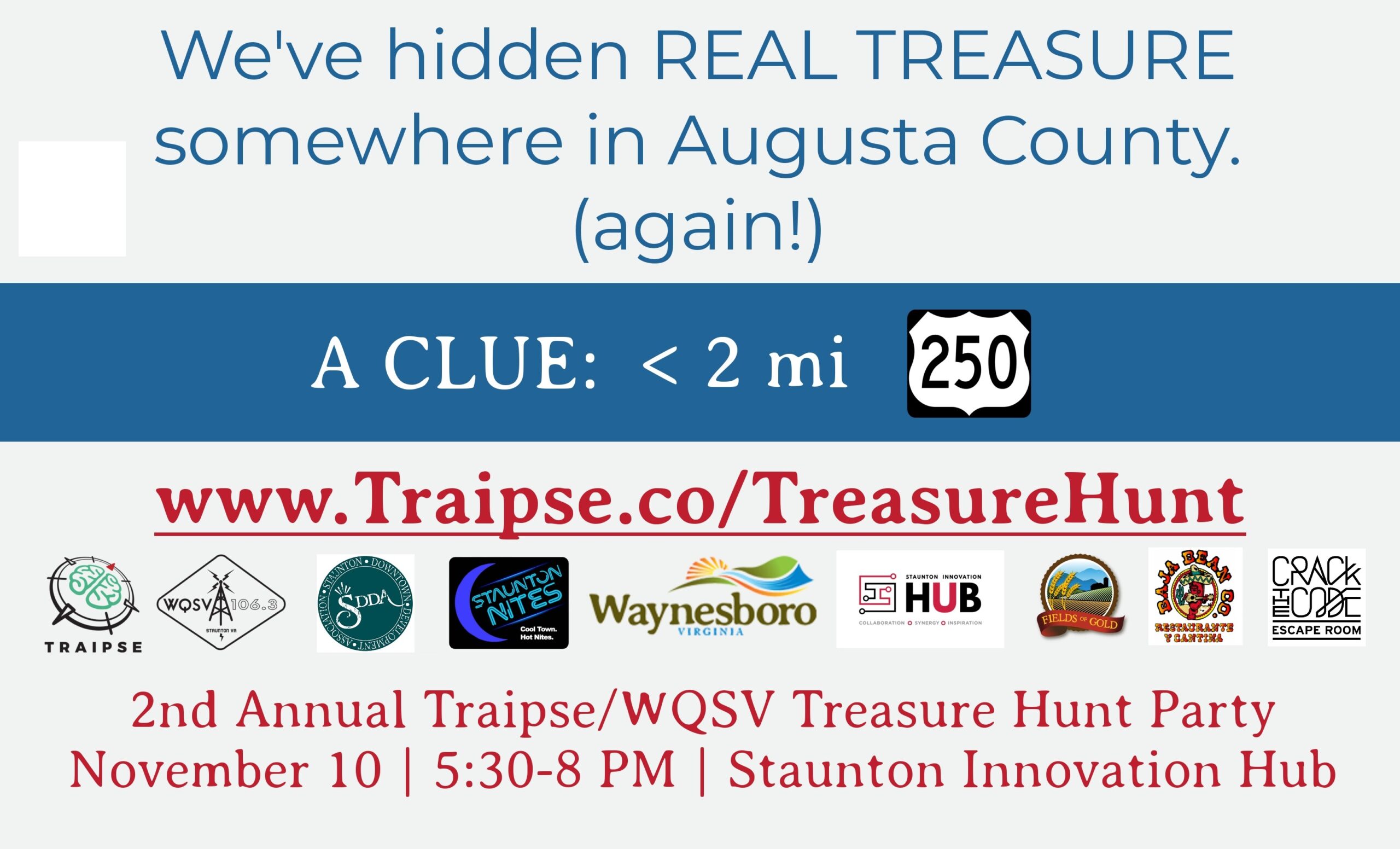
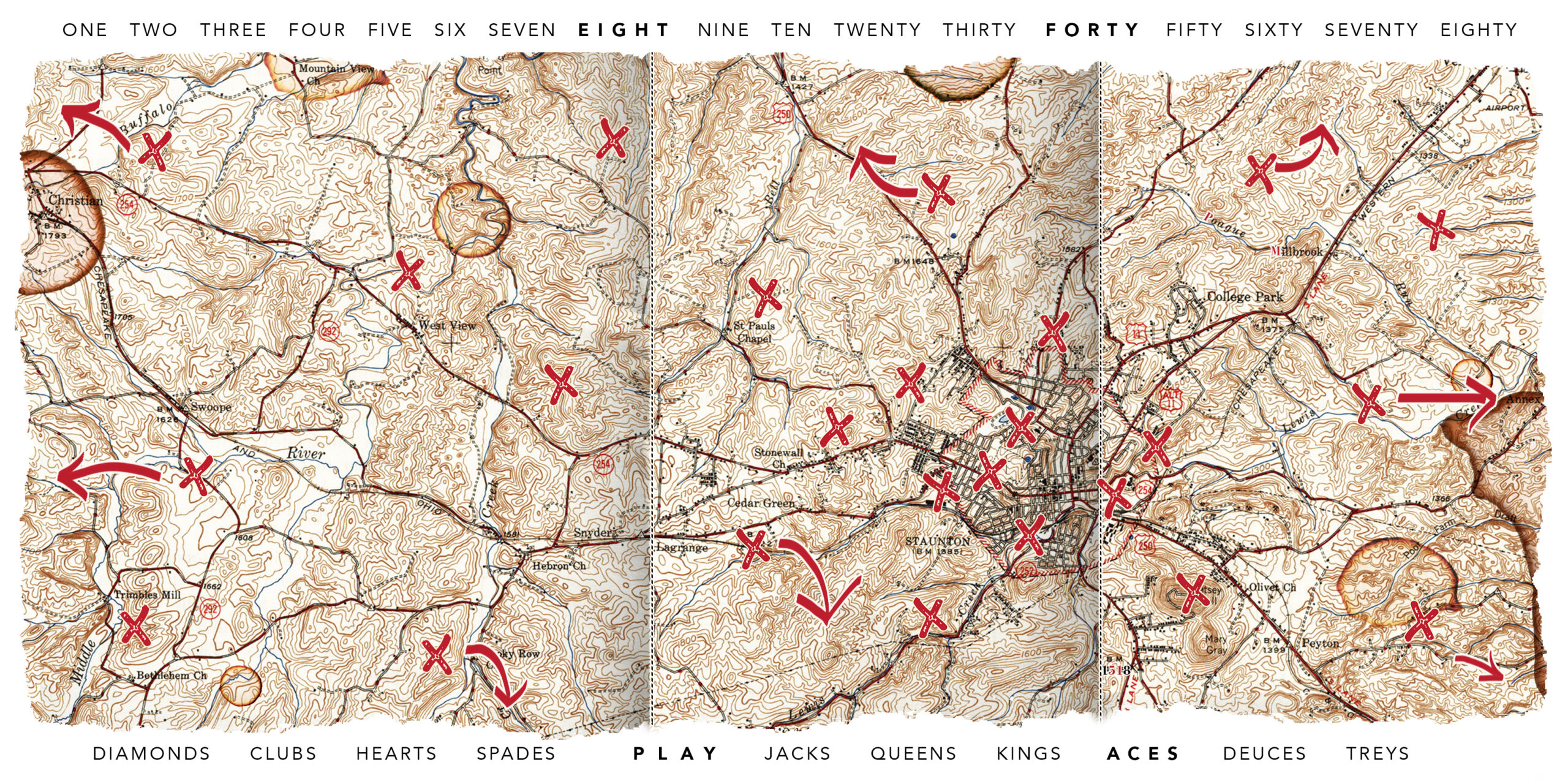
Every year at Traipse we hide real treasure ($1,000 in cash and assorted gift cards) somewhere in Augusta County, Virginia. Over a six week period we partner with local businesses, business associations, and the local radio station to disseminate and hide clues about the treasure’s location. It’s a massive undertaking that has gained quite the following, with a few thousand people participating.
My strategy for managing and releasing a few hundred puzzles and clues over that long of a period of time via a variety of platforms is a lengthy blog post unto its own, but I’m particularly proud of our 2019 hunt, when we partnered with the Staunton Public Library. The final treasure location was a fake book that I made and hid among the shelves. My huge spreadsheet of clues eventually led treasure hunters to the library and then slowly revealed which shelf should be searched. My favorite detail: the library added a label to the book’s spine, completing its look! A making-of and placement video:
★ Building Quests for Large Festivals, and my Rings of Power
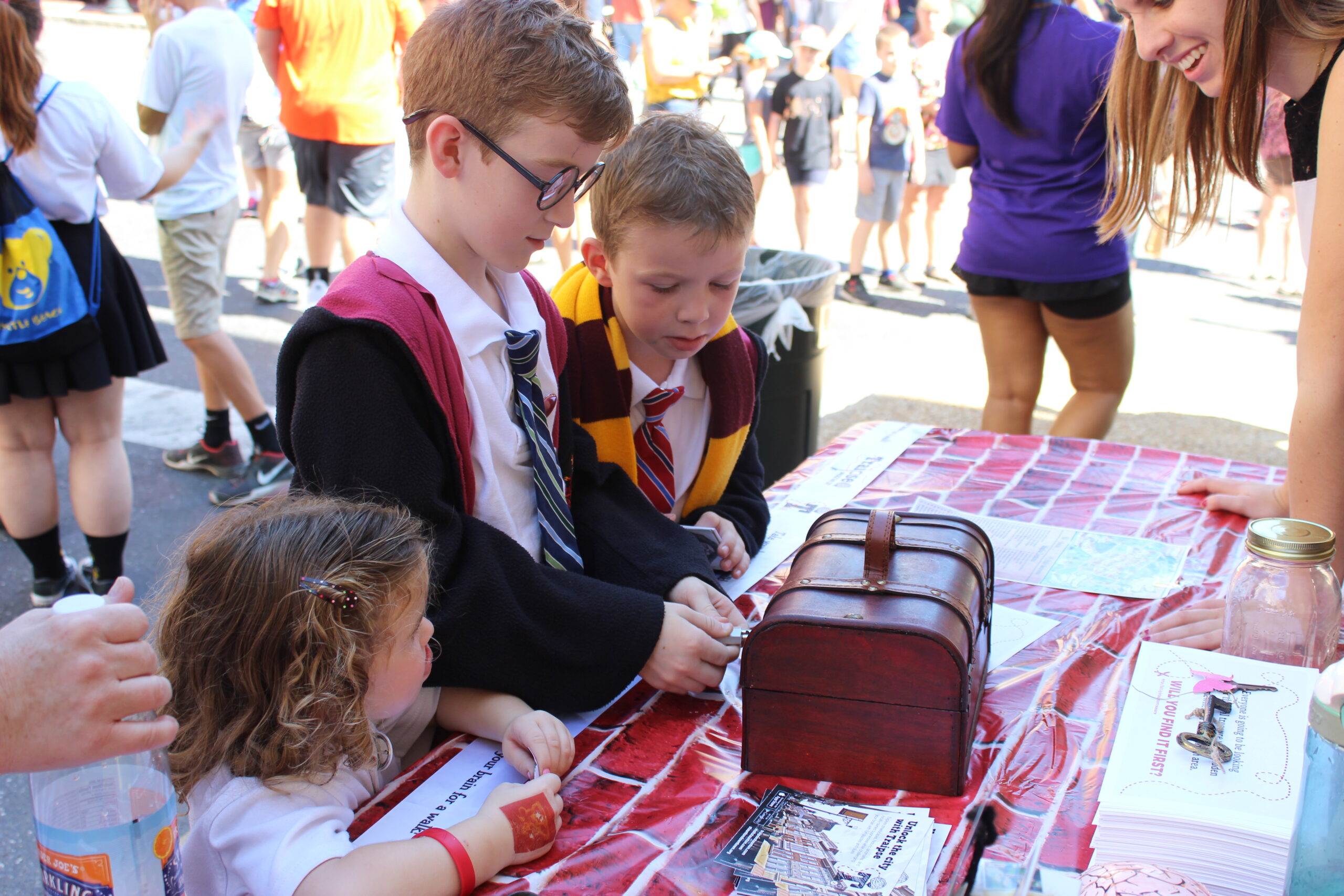
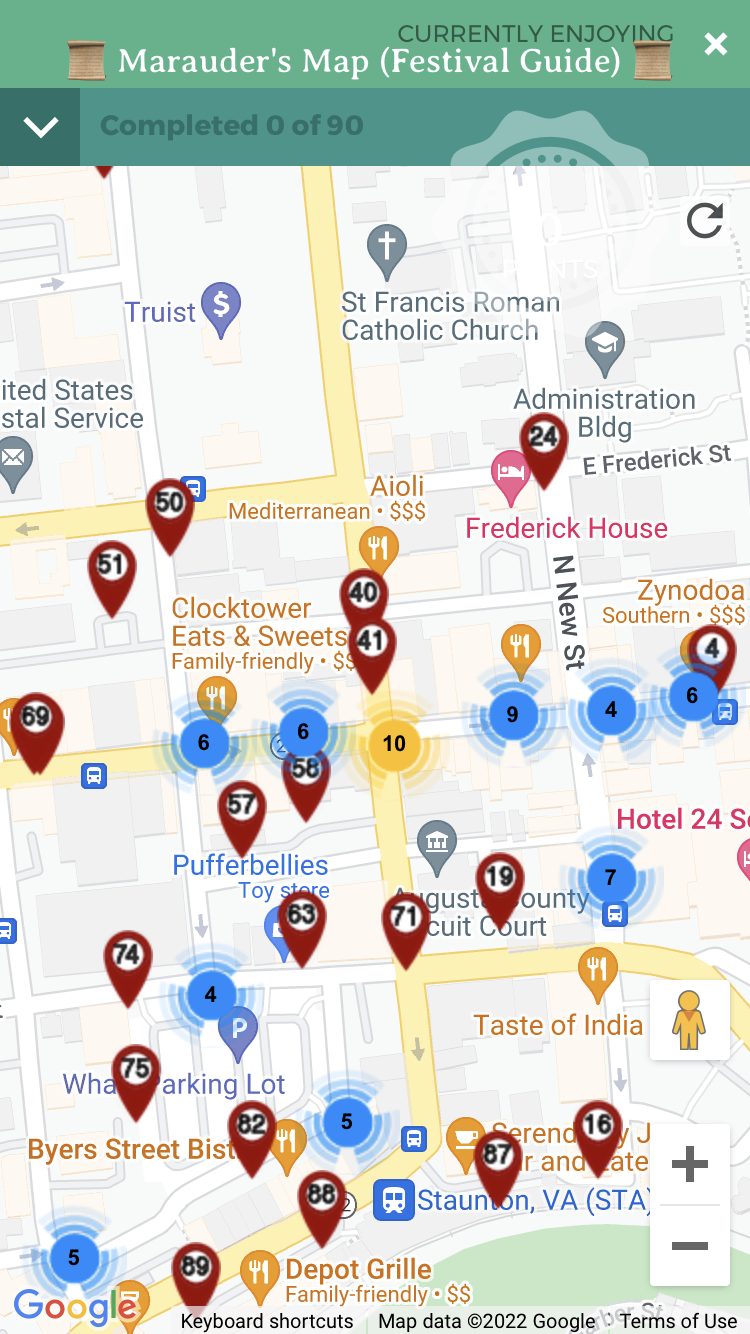
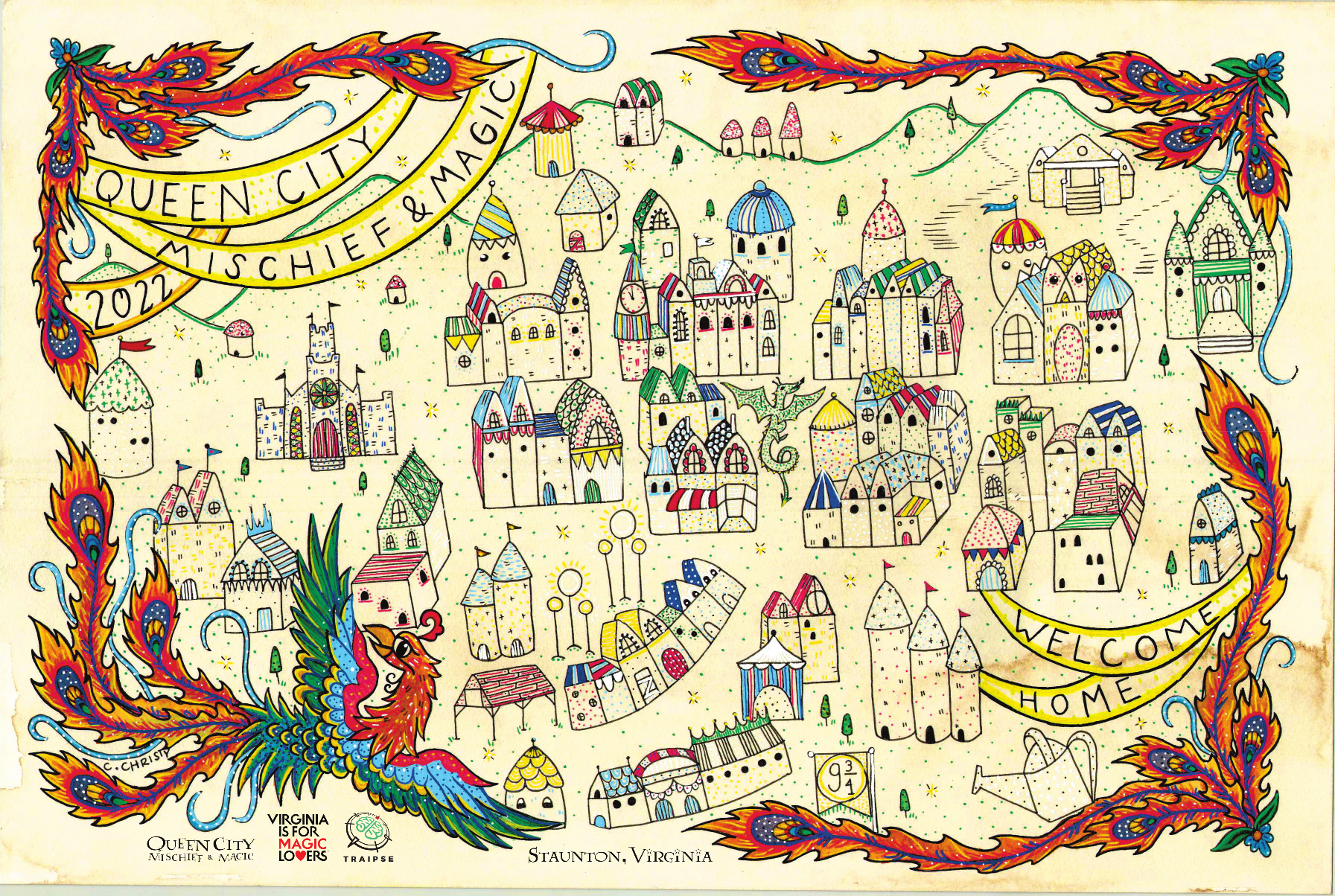
Every year in Staunton, Virginia there’s a big “wizarding” festival, the “Mischief and Magic Festival” (not explicitly Harry Potter-named after JK Rowling’s people sent them a legal notice…). The festival would hire Traipse, where I worked, to create special activities for festival-goers and it was an opportunity to build fantastic “quests”. For the festival in 2019 I create a “Quest for Magic Rings”. I took a nice jewelry box and mounted a magnet-activated solenoid in it. I then got a few hundred cheap plastic rings and hid magnets in a few of them.
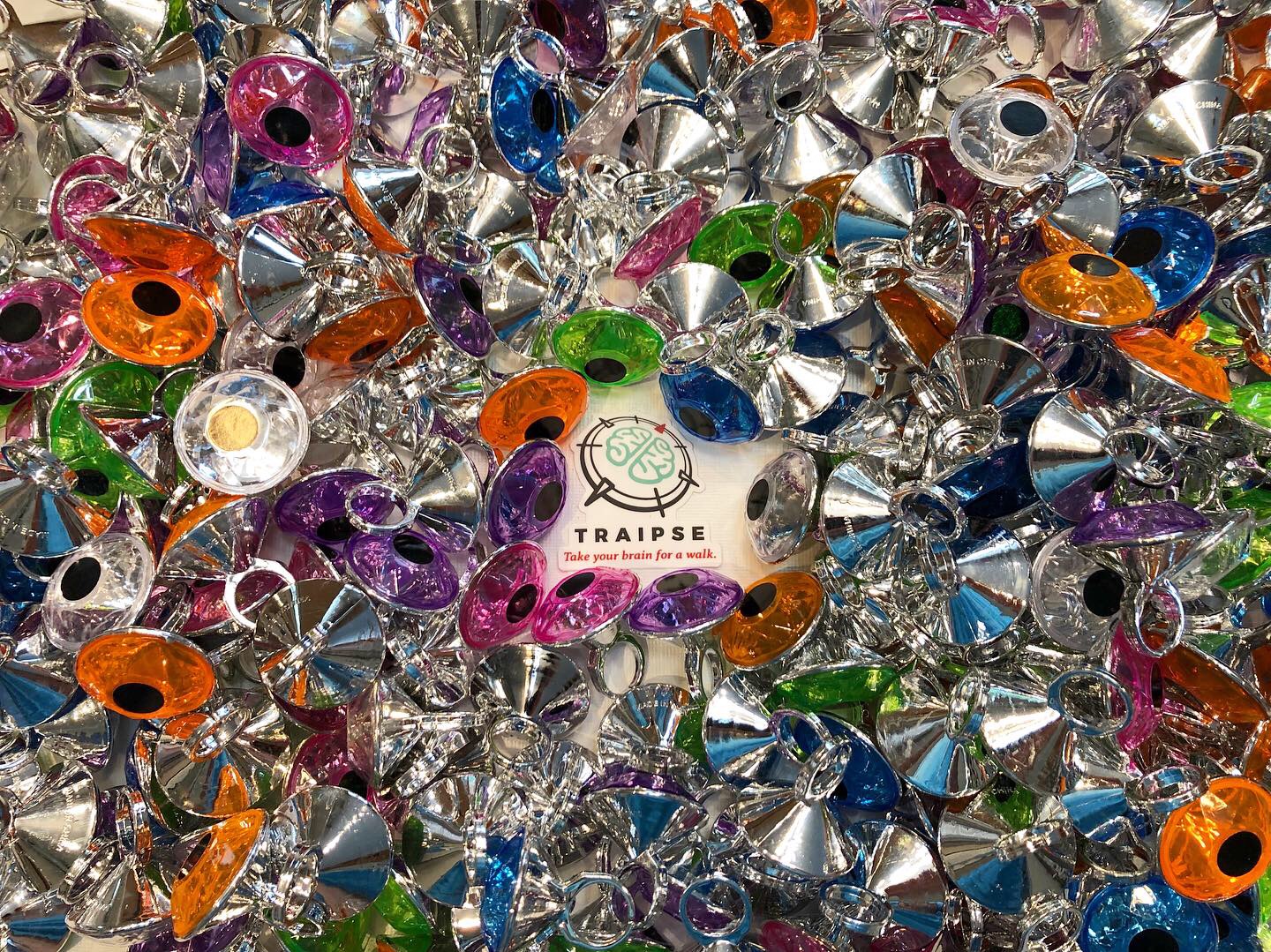
Next, I “hid” the rings in plain sight all around the festival area and people had to find them, and bring them to our table to test if they had found a “magic” ring—.only a ring with a magnet inside it would be able to open the “magic” jewelry box. It was ridiculously popular and people were obsessed with finding the correct rings.
In 2022, we were again hired to create a couple scavenger hunts for the festival and I wanted a visual way to show passersby how many people had completed the hunts. I turned our white board into a “spider” and added an eyeball for every finisher (color based on the person’s Hogwarts house). We soon ran out of eyeballs and had to use markers. Then we ran out of white space. I wish I had taken a picture of the final thing (we were sooo dead by the end of the weekend), but below is a picture after the first hour of the game.
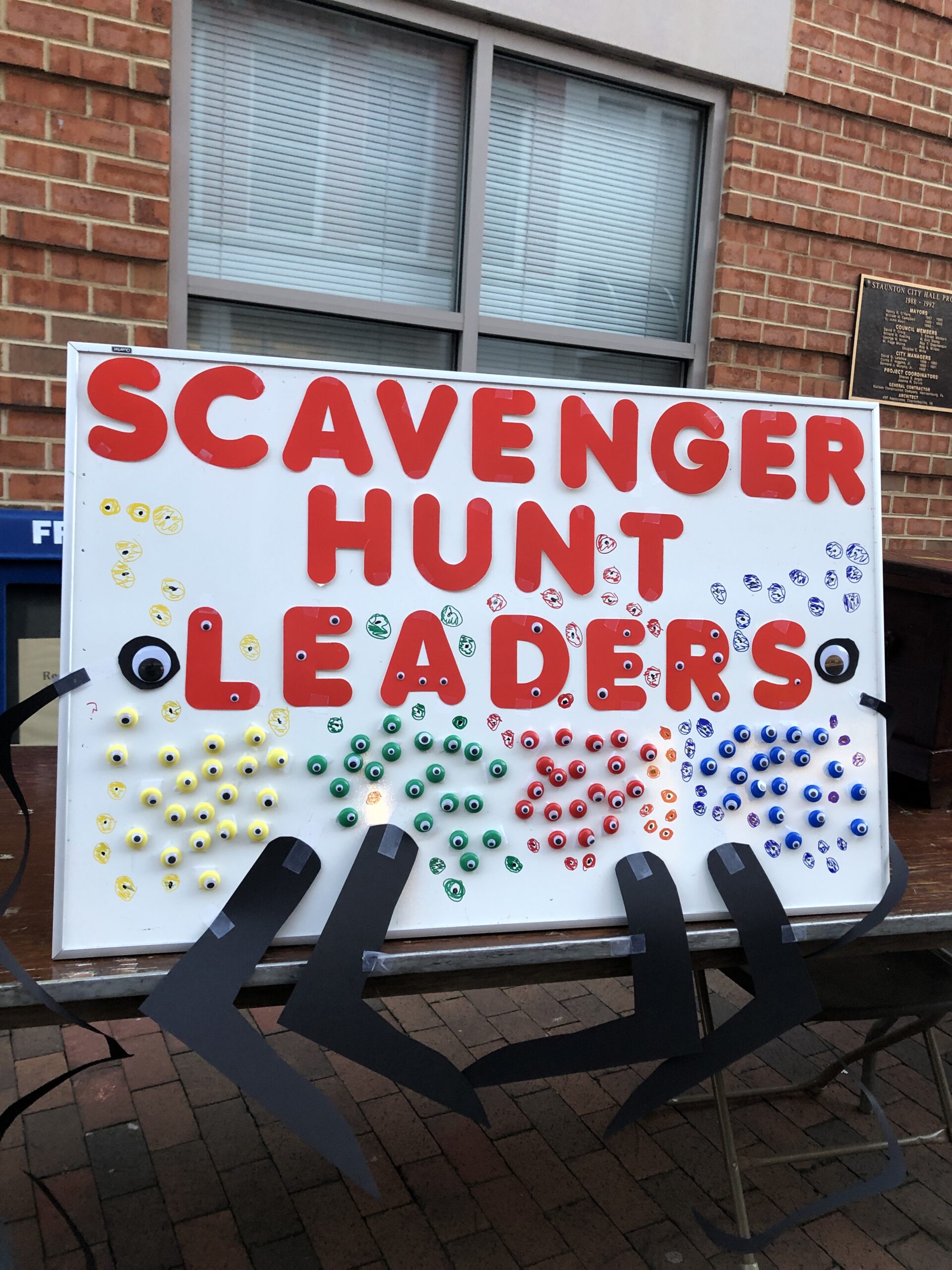
★ I made a mega-game for my child’s birthday party
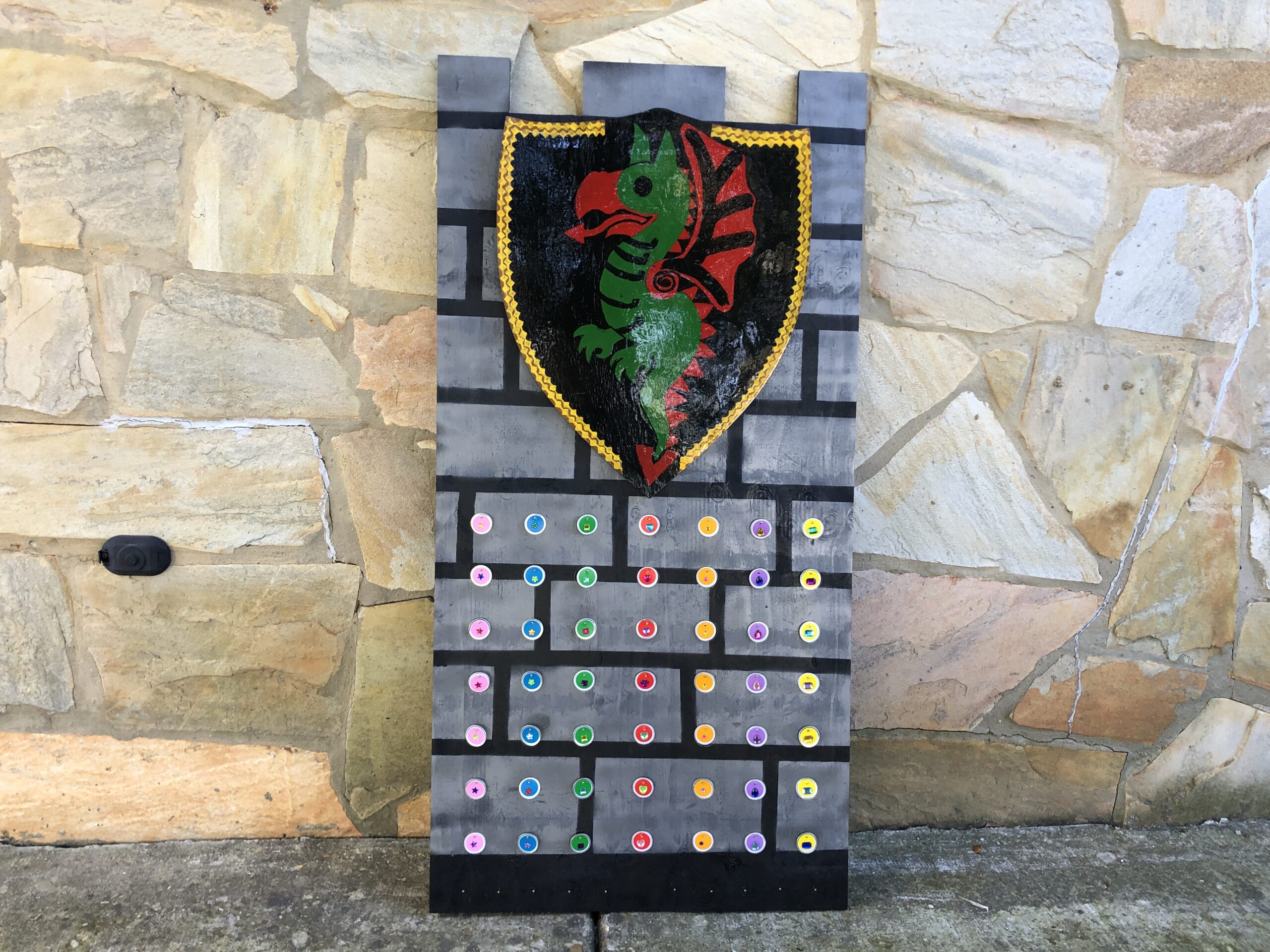
A dragon was attacking our town! I created a mega-game for my kid’s birthday party, and I break down my design process in this blog post.
★ Secrets in my Little Free Library
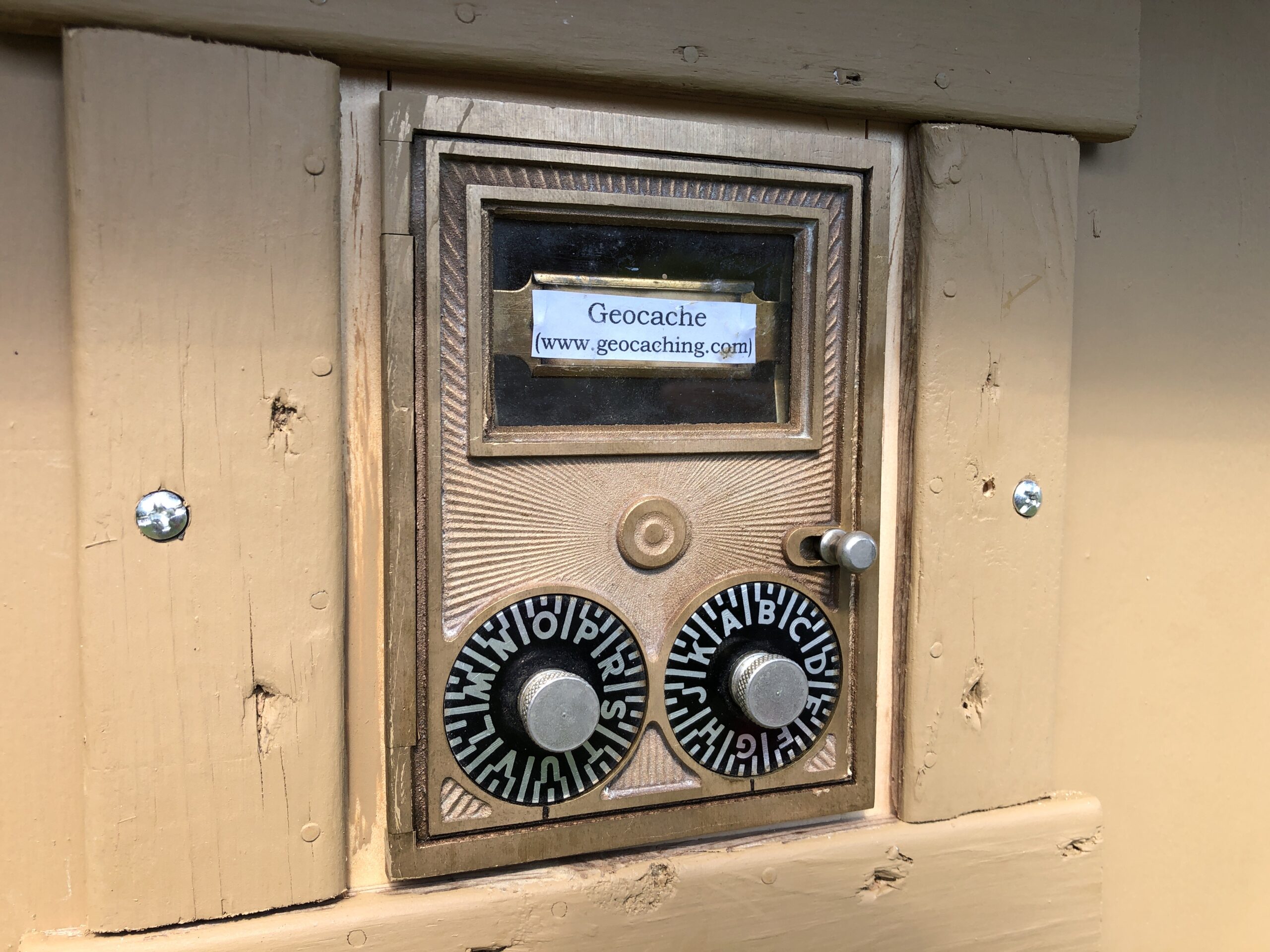
I found an old post office box at a local salvage store and my puzzle-building brain had to have it. After quite a bit of brass cleaner via a toothbrush, and some WD40, I got it looking and working as good as new.
We’ve been wanting build and install a new Little Free Library outside our home for ages, but it had always stayed in the middle of my “fun projects” list. Never quite rising to the top. One day, however, my father, who perhaps is to blame for my own impulse to build random things, asked if we’d be interested in a little library if he built one. He had found a cool old glass cabinet door that would work well as the front. I enthusiastically assented with one caveat: it needed to have a “secret” compartment using the old post office box mechanism. I sent him the sketch of the library I had been planning.
Not long thereafter I was mixing concrete to set the pole of our new book repository!
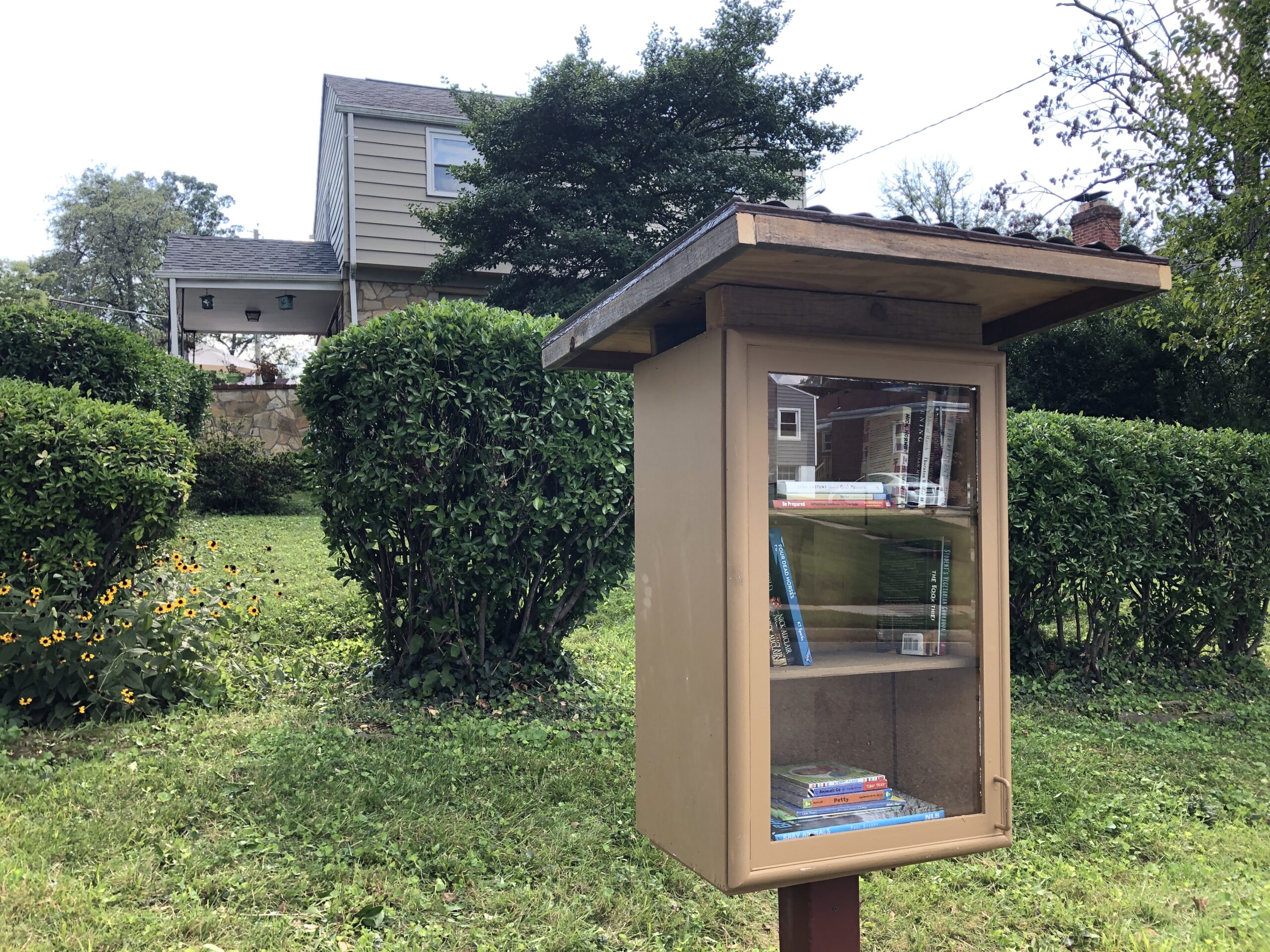
You see, I had a plan to build a series of escape room-esque puzzles that would lead players to the combination to open that post office box. I needed players for this little game though, and it was unlikely that very many of our neighbors in this suburban community would care to play. I did have at my disposal, however, an enthusiastic geocaching community I could call on. Real quick, geocaching is a game where people hide containers all over the world and then posted the latitude and longitude for other people to find those containers, and then sign the logbook within. Geocaches come in all sorts of shapes and sizes, and there are different styles of geocaches. Some are called “mystery” caches where you must first solve a puzzle to access the geocache. It was a great setup. I had a ready-made mystery cache-loving group always down for a puzzle, and geocaches all have unique webpages. I would turn this little library into a mystery geocache and its webpage would allow me to deliver important logistical information.
I had a fake book I made for a different project in need of a second life, and it fit perfectly with the theme. I filled it with other mysterious objects, each encoded with a bit more of the puzzle.
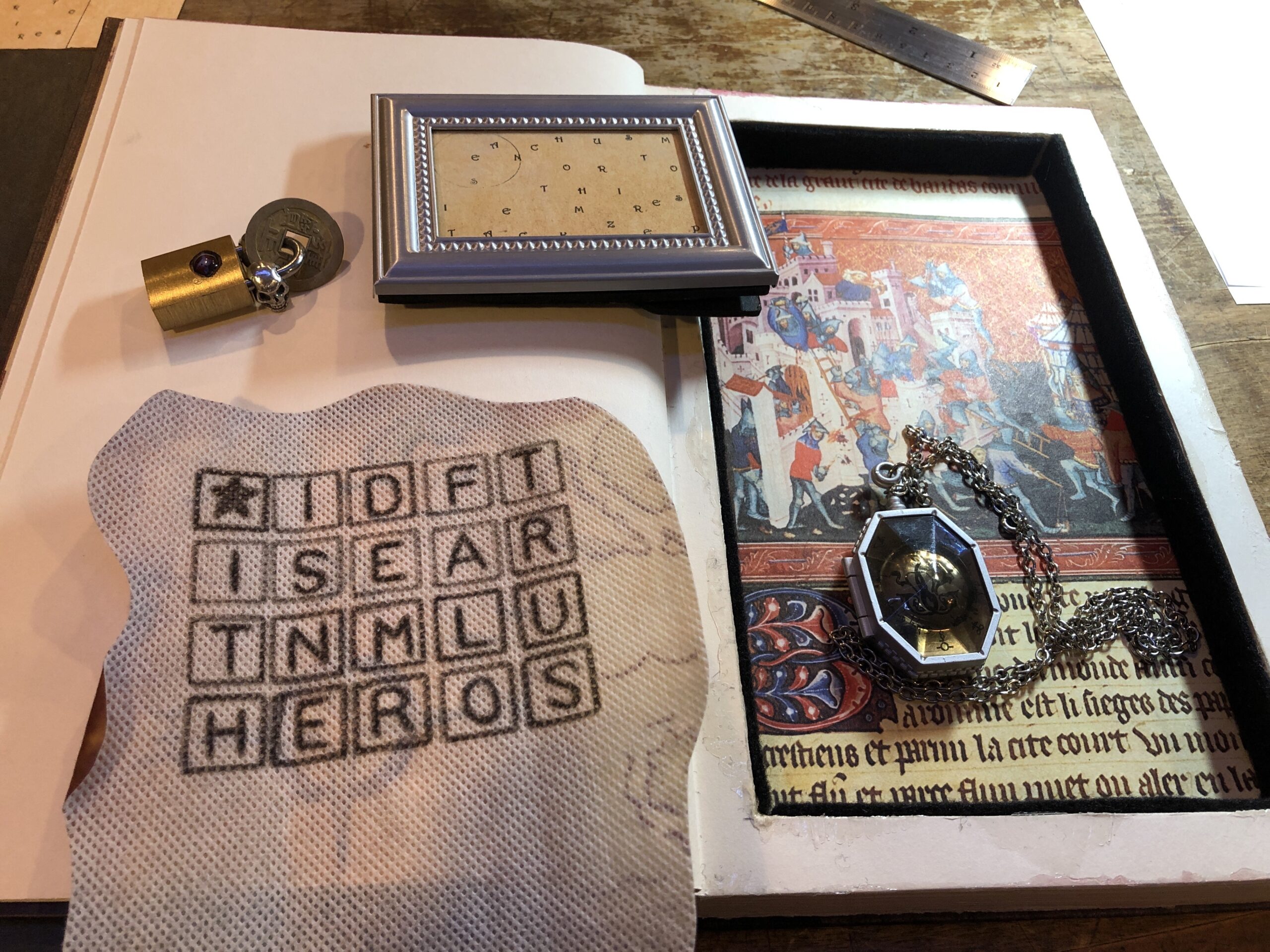
The mystery geocache has been a smash hit, and was voted “Best Geocache of 2022” by members of the Maryland Geocaching Society. Not too shabby, I think.
Return to top.
★ Turning Metro’s logo into poop with augmented reality

In a bout of frustration with the ever-present disaster that is the Washington, D.C. Metro system, I turned to augmented reality for a cathartic experience. Read on.
★ A Geocaching Twitter Bot
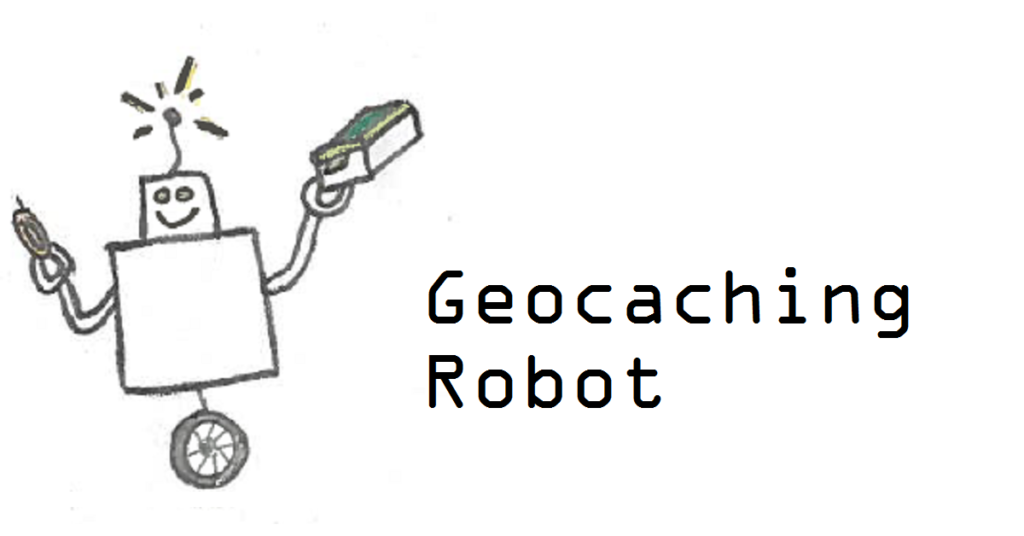
Not all the projects I’ve built have been a raging success. I once built a Twitter Bot and learned a few lessons along the way. Read on.
★ Locative Storytelling using Twine

I was hired by the University of Maryland’s Department of Public Safety to create a game teaching people about the campus Blue Light Emergency Phones and where to find them. I wrote Guardian of the Blue Light in Twine and built it to pull in location data from the player’s browser. Students walked around campus following different paths, physically and narratively, and enjoyed a spy-thriller while getting familiar with these campus sentinels.

★ League of Resident Theatres presentation
In 2017 I presented at the LORT conference about my various marketing and audience engagement projects. The presentation was titled, “Digital Audience Engagement Projects or, I have a brilliant idea that makes coworkers look at me in confusion/fear.” The LORT conference is somewhat of a serious affair, mostly being attended by stone-faced theatre executives. I’m very proud to say that I absolutely slayed the room. (Granted, most of the presentations at the conference were about union negotiations and the like, so it was a low bar.) The presentation covers a lot of items you can explore on this page, but is a more-complete dive into the lessons I learned while making them. Explore it here.
★ Augmented reality and The School for Lies

Using an augmented reality app called Zappar, I created an interactive installation in STC’s lobby for the production of The School for Lies which had a gorgeous set, heavily influenced by contemporary artists.
By pointing their phones at this display and activating the augmented reality app, patrons could explore the work of those artists and engage with content like behind-the-scenes photos and videos. The project’s official webpage.
We interviewed the set designer for a series of videos that are part of the content available within the augmented reality experience. He also generously supplied the actual set model which was used by STC’s Scene Shop as the guide for building the show. The model added a needed physical element that really made the installation stand out in the lobby.
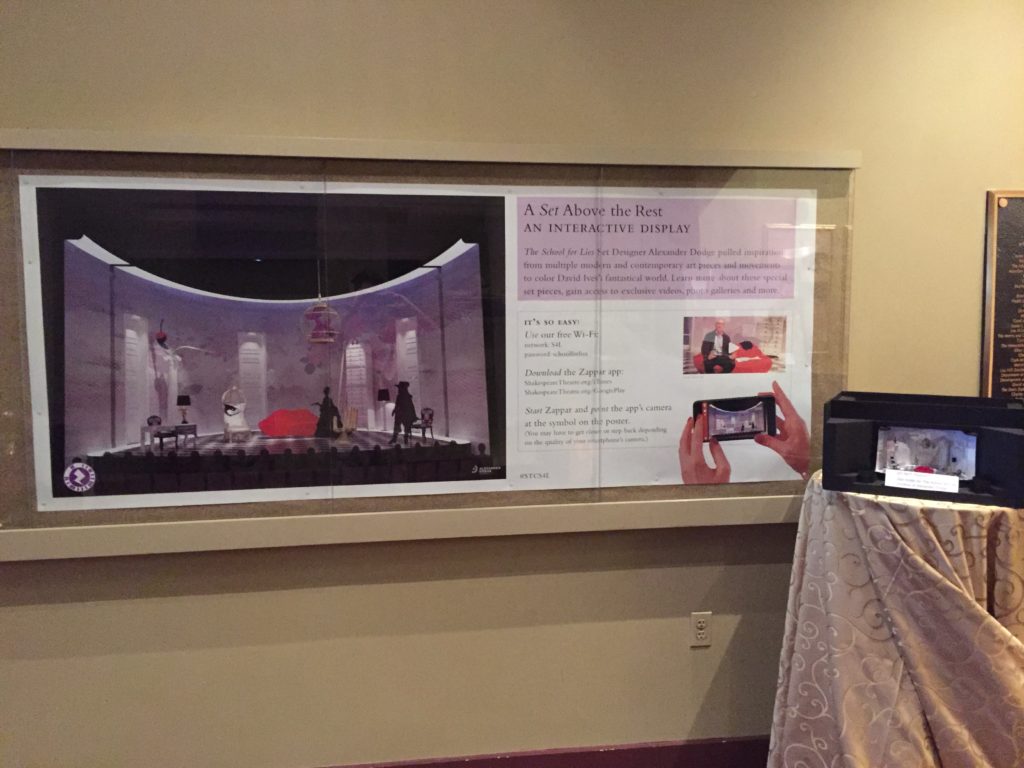

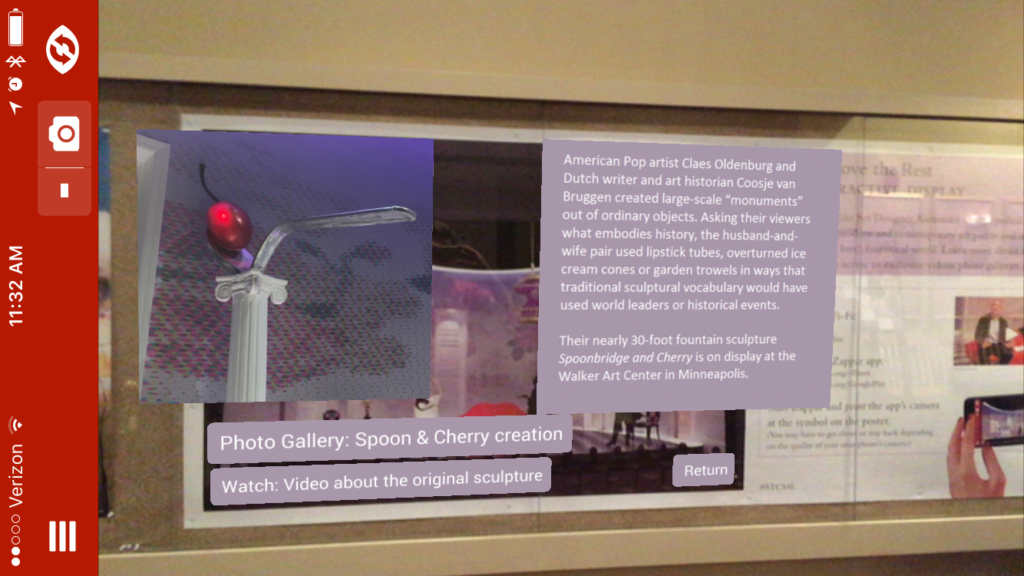
★ Undo Othello
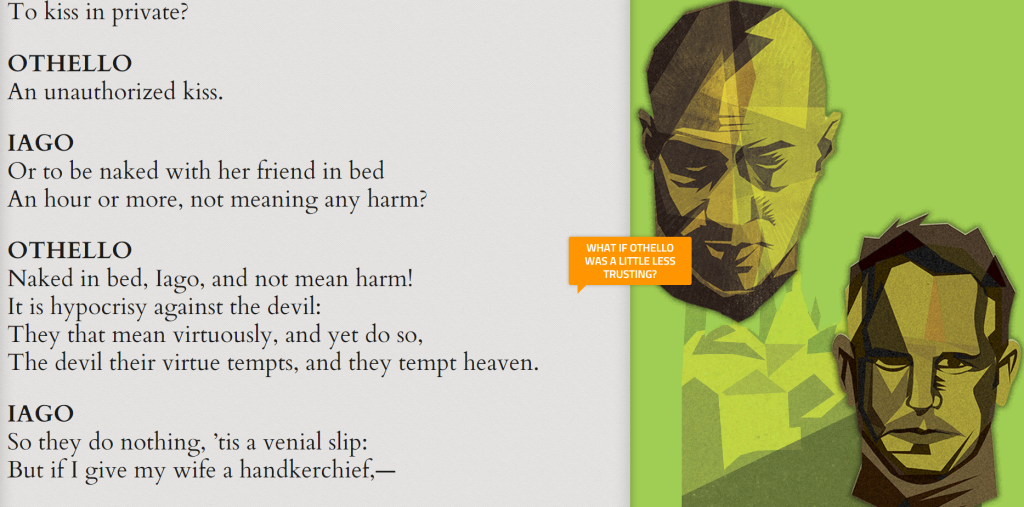
Got together with my friends at Unmapped Path to create “Undo Othello” an annotated interactive exploration of the play’s Act 4, scene 1. At various points in the scene you can interrupt it to try and change the course of action.
UPDATE! STC remounted Othello for their Free For All and it gave me a chance to revive this project. I turned it into an interactive lobby experience using a Raspberry Pi.
UPDATE 2: Sadly after a website revamp “Undo Othello” is no more. But, you can check out some footage of it in that blog post.
★ Juliet_Bot, a Facebook Messenger bot
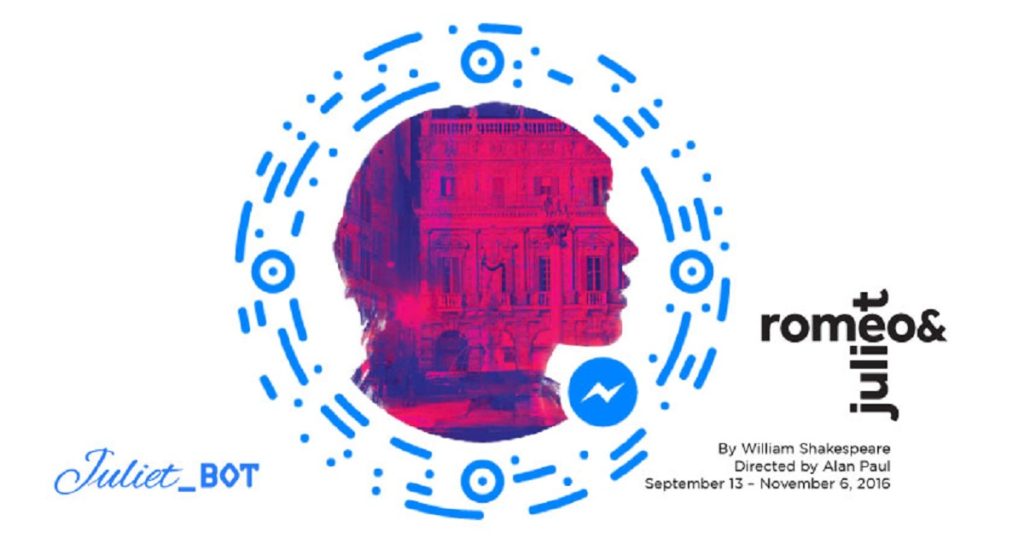
I created a Facebook Messenger bot to suppose what Juliet, of William Shakespeare’s ROMEO & JULIET, might have thought about her pending arranged marriage. Patrons could message her and participate in a conversation with branching dialogue choices. Read about the origin of the idea.
Sadly, the company who hosted the bot unceremoniously dissolved and Juliet_Bot is lost to time. I did manage to save a snippet of the conversation in action:
★ Redactor, a text adventure for 1984

Created a text adventure game called Redactor to promote our presentation of 1984. You play as Winston in his job at the Ministry of Truth. Not only was it a successful marketing and audience engagement piece but, personally, I got to dive into the storytelling tool, Twine. It was originally hosted over at STC’s website but I noticed that parts of it started to fade away as they updated things. Started hosting it here.
★ Wedding invitation to The Taming of the Shrew
We were producing Shakespeare’s notorious play, The Taming of the Shrew, and it was going to be directed by Ed Sylvanus Iskandar, a NY-based director who is known for his provocative staging. While registered as liberal, STC has a surprisingly conservative audience and I knew that we’d need to be up front that this production wasn’t going to be “traditional.” I took a hard look at the tactics we typically employed when marketing a play and decided that they would need to subtly reflect that this Shrew would be unusual. It was tricky because at the time we still didn’t quite know what the director intended to do.
I won’t go into the play’s (horrifically misogynistic) plot but essentially the characters are trying to abuse Kate, the shrew, into getting married. Instead of our typical early postcard which is usually very marketing-centric, I thought a “Save the Date” where the groom is yet to be announced would be a way to subtly declare that something about this show would be different. We’d spend a little money to print something nice for greater impact.
It came in a nondescript envelope with a simple stamp on the front and our address plainly printed on the back.
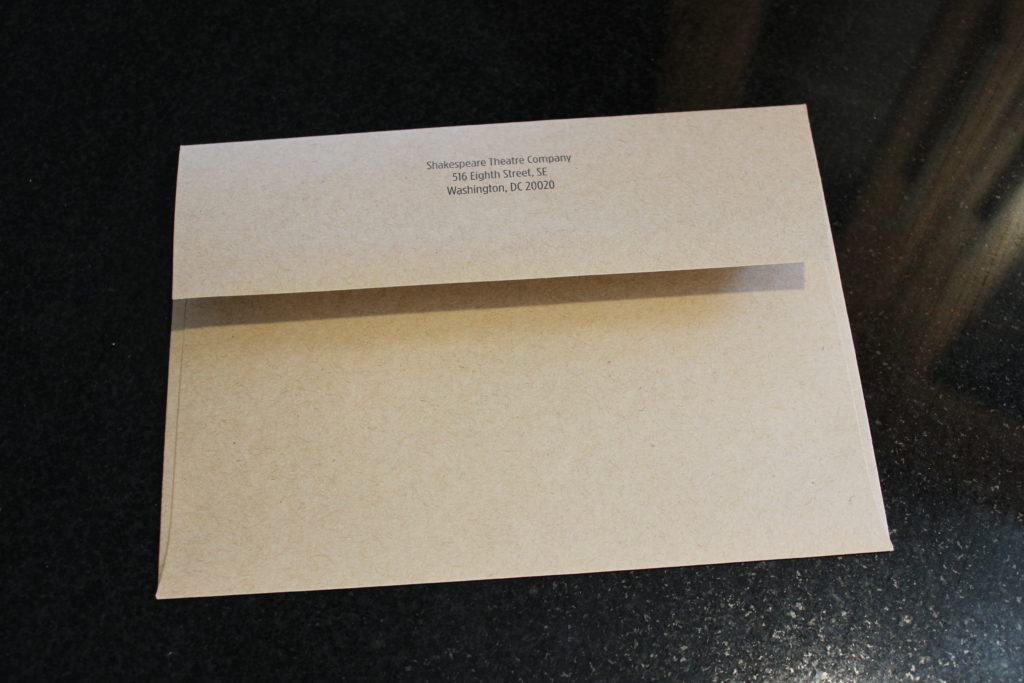
Opening the envelope our customers were greeted with the single “Save the Date” card announcing the wedding. The silver foil punched into the card made the whole thing really pop.
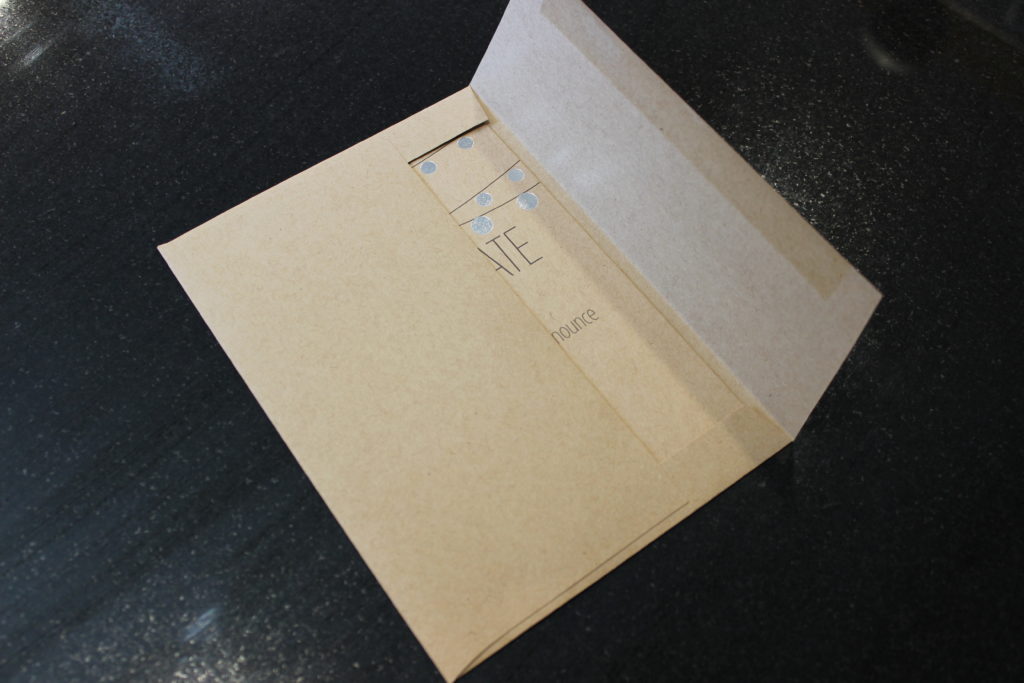
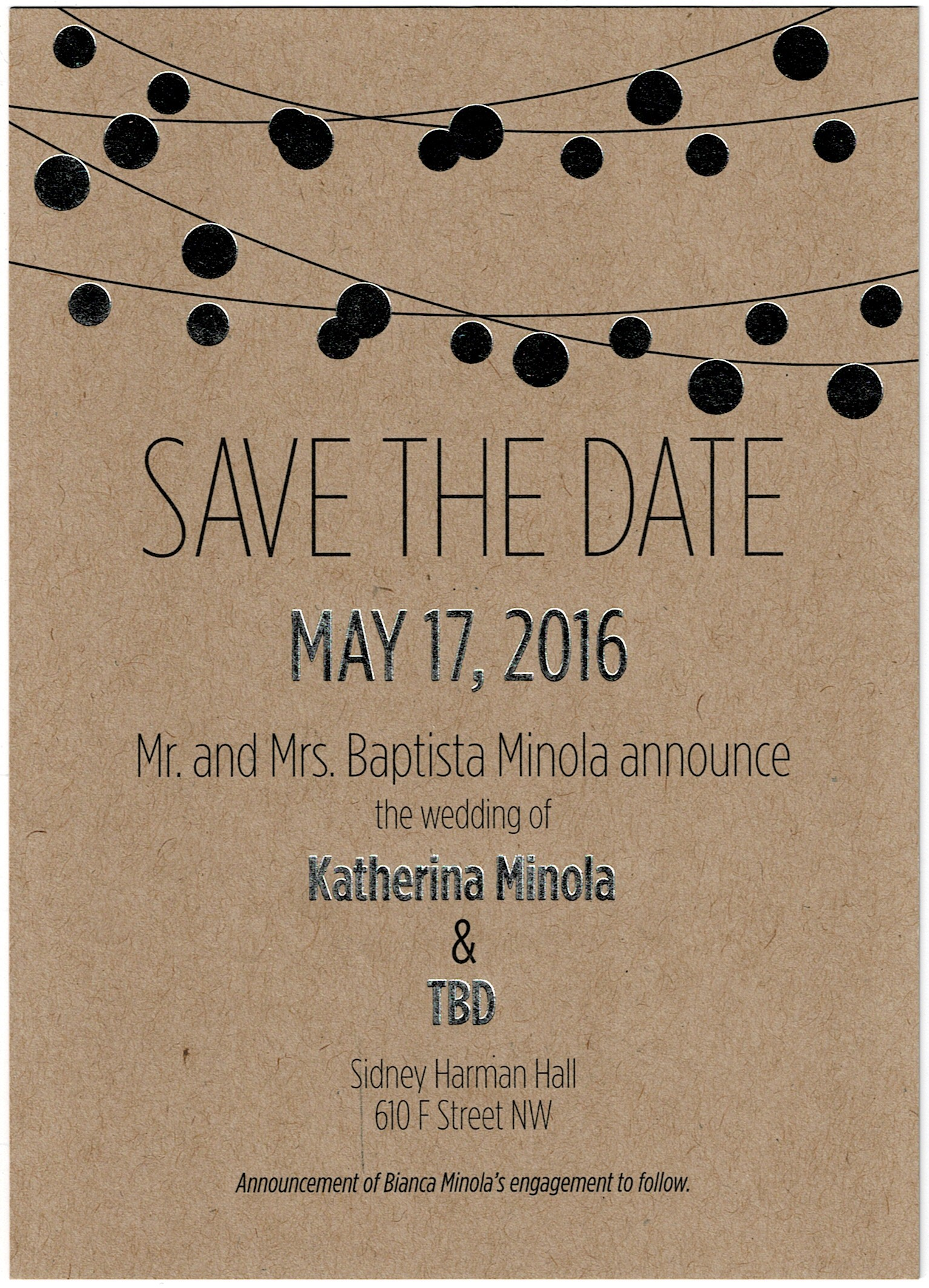
A lot of Shrew jokes packed in there for Shakespeare aficionados.
The back is where I included the marketing language, a ticket discount, and a vanity URL.

I’m proud to say that this effort was tremendously successful. Our customers took hundreds of photos of the piece and shared it all over social media. The promo code earned five times what the piece cost. I’d bet good money that in the history of direct mail that a piece getting positively shared in this fashion is pretty rare.
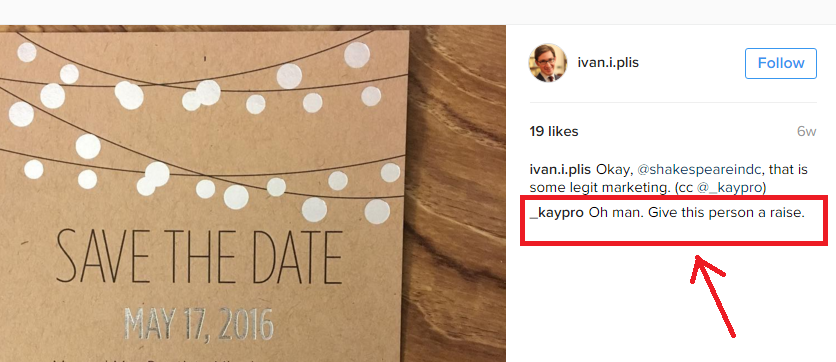
The special landing page where this piece pointed: www.ShakespeareTheatre.org/SaveTheDate. In case that page ever goes away:
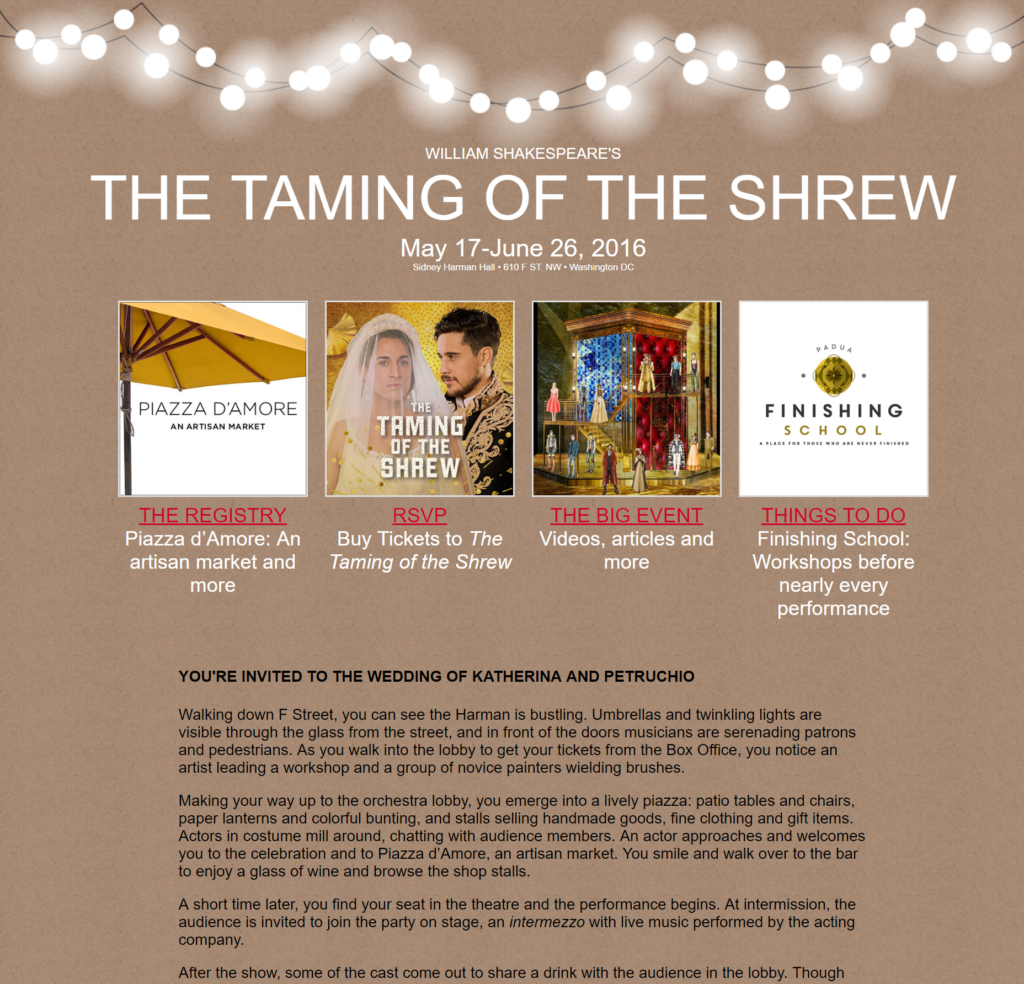
★ Set the events of Macbeth into motion

I created an interactive chart to illustrate the chain of tragic events in Macbeth. It was just a quick thing that I created and scheduled for a quiet Friday afternoon but ultimately it was shared hundreds of times on social media.
★ Secret Seeds
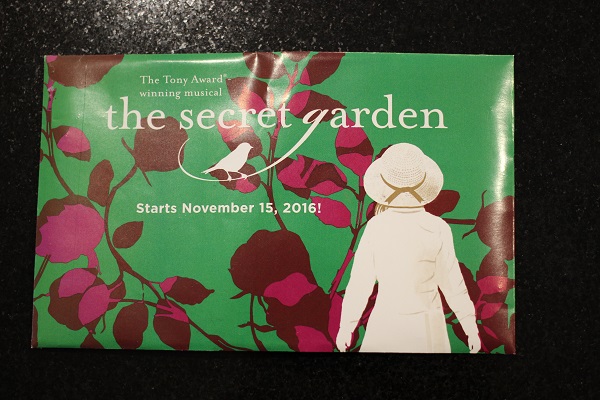
Considering that gardening is among my (many) favorite hobbies, coming up with ideas for the Shakespeare Theatre Company’s production of The Secret Garden was a dream opportunity. Initially I had the thought to mail a letter which used special paper with embedded seeds. Customers could plant the mailing itself. Turns out that special paper isn’t cheap and there were a few other logistical problems that made me nervous enough to drop the idea.
I later remembered a wedding where the favors were custom printed seed packets and a quick search revealed something even better, mailable custom seed packets.
My goal for direct mail pieces in general is to try and create something that survives the trip inside a customer’s house, something that isn’t immediately tossed into the trash. I deliberately didn’t reveal what kind of seeds would be in the packet, counting on people’s curiousity being strong enough for them to at least visit the special webpage (where, of course, I had retargeting code embedded so I could hit them with banner ads for The Secret Garden later). Plus, I counted on the fact that most people would be reluctant to throw away a packet of seeds even if they had no initial interest in the play.
The campaign was a success! The mailing converted at 20% and brought in seven times the cost to printing and postage. Plus it generated some buzz as amused customers shared photos of the piece on social media.


★ A puzzle game for A Funny Thing Happened on the Way to the Forum
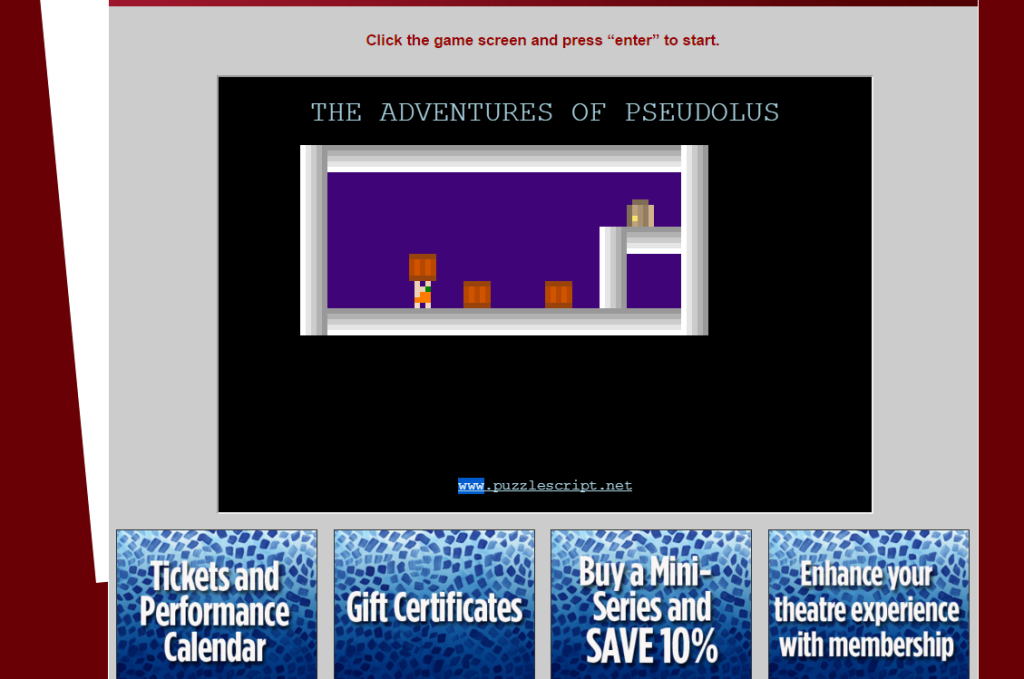
I made a basic puzzle video game for A Funny Thing Happened on the Way to the Forum. Players who finished got a ticket discount and could share it. This doesn’t seem like much now, but back in 2013 this was *revolutionary* theatre marketing. (It didn’t take much.) We were trying to kickstart a new “young professionals” program and needed content to attract the young folks. This silly little game alone sold a couple hundred of tickets to the play via that program and it made me look pretty good.
Sadly, after STC designed a new website, the game is now lost to time.
★ Send a snarky valentine for The Importance of Being Earnest
The Importance of Being Earnest ran through Valentine’s Day so I created these snarky Valentines using quotes from the play. Built a mechanism where customers could share them to social media or email them to friends with a custom message in the email body. Either way it would also share a small ticket discount. The webpage no longer exists after STC moved to new website but here are a few of my favorites:

★ As You Like It road trip kit

Created a “Road Trip Kit” for As You Like It, consisting of:
– A paper edition of “Tongues in Trees”. Download the pdf.
– As You Like It Road Bingo. Download the pdf.
These were created at the tail end of the show just as a random idea for the coming Thanksgiving holiday but they got a huge response– got over 10,000 downloads (!). I created another set for The Tempest for the Christmas holiday and it too got a good response.
★ Send a message in a bottle for The Tempest
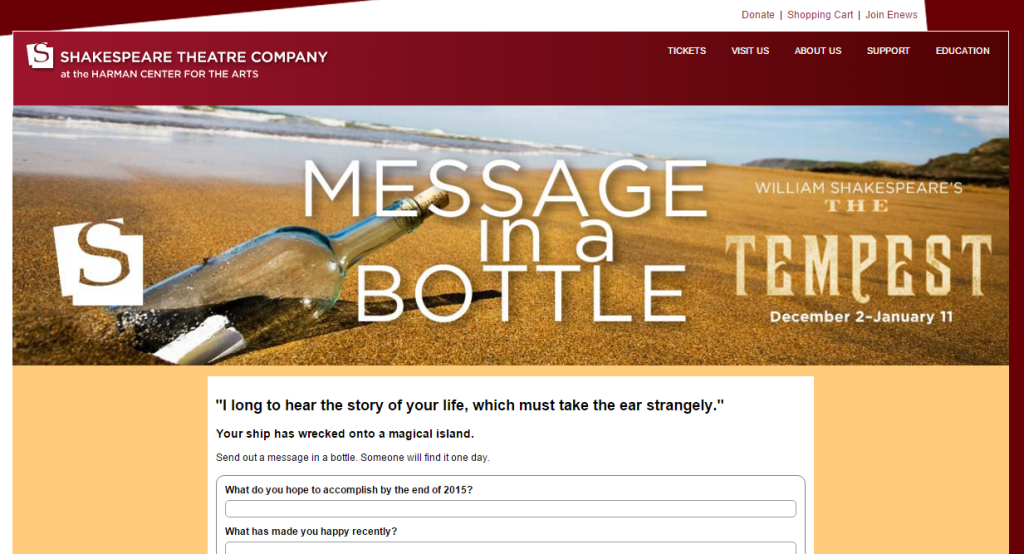
Created a “Message in a Bottle” promotion for The Tempest where users filled out a web form with a few basic questions about their hopes and dreams. They were also asked to share the promotion, in the process sharing a ticket discount. A full year later I sent the “bottle” back to the users with their own answers & a discount for the coming season. Not sure my coworkers “got” this one but it was fun to implement. Plus a little over 600 people participated so I’m calling it a win!

